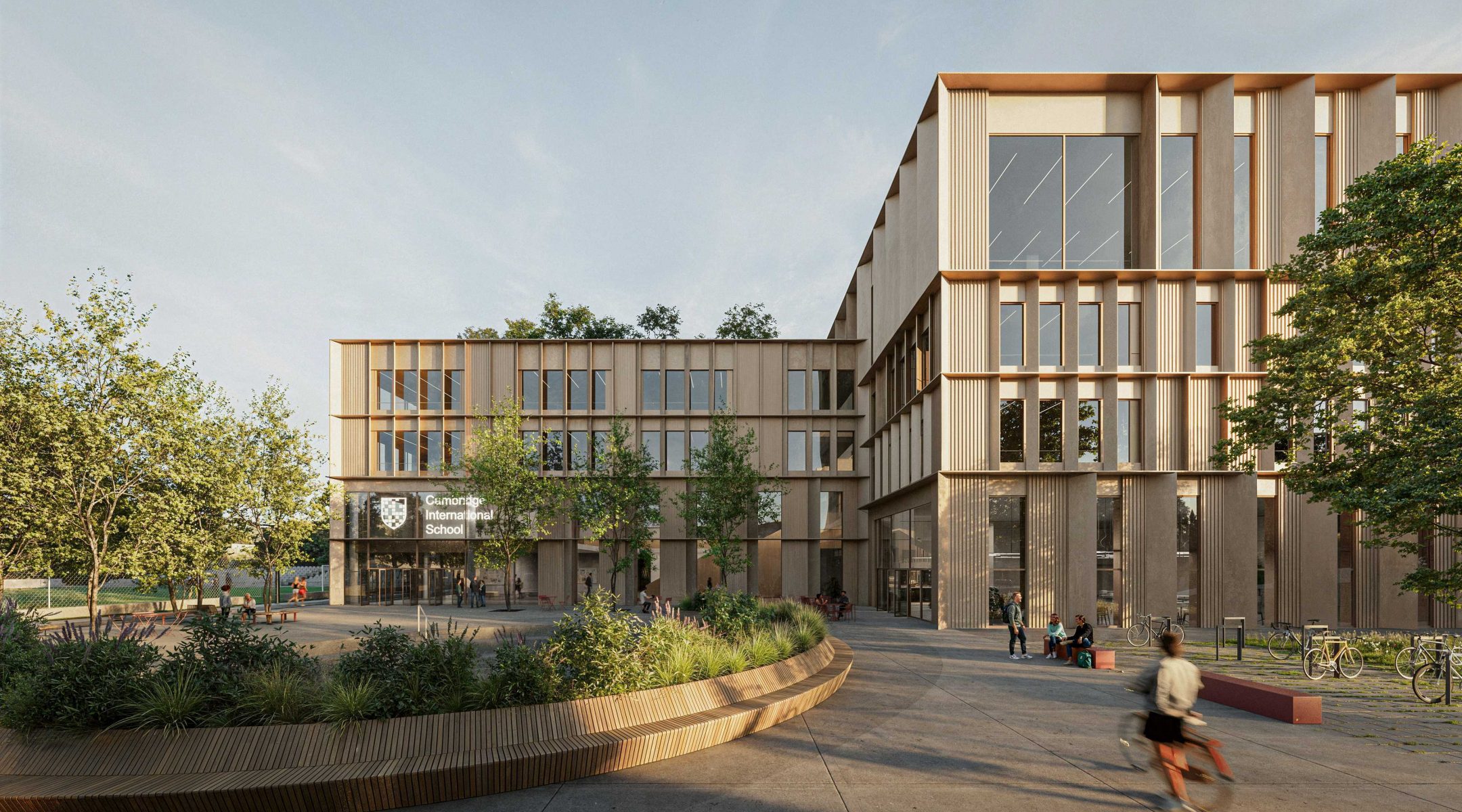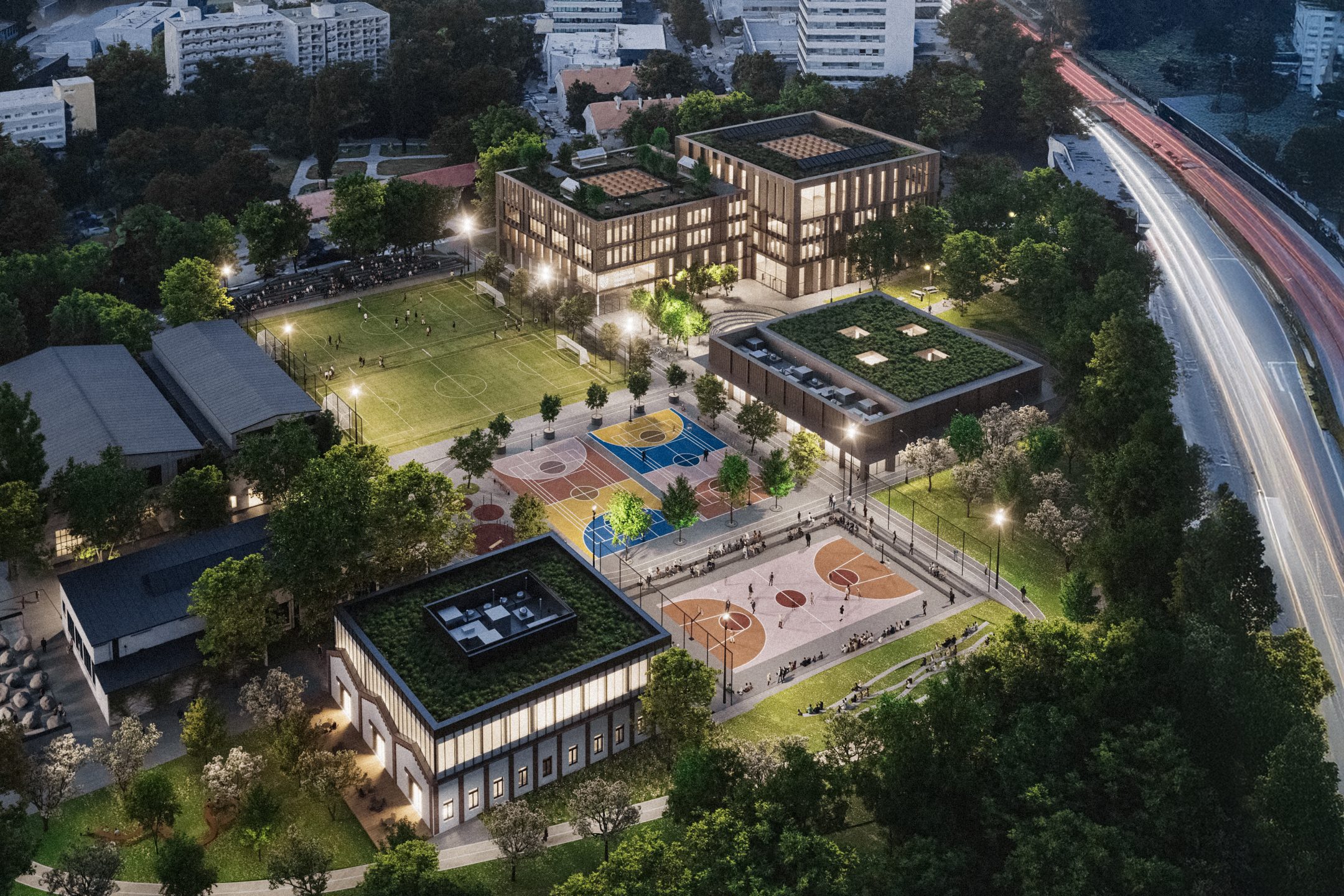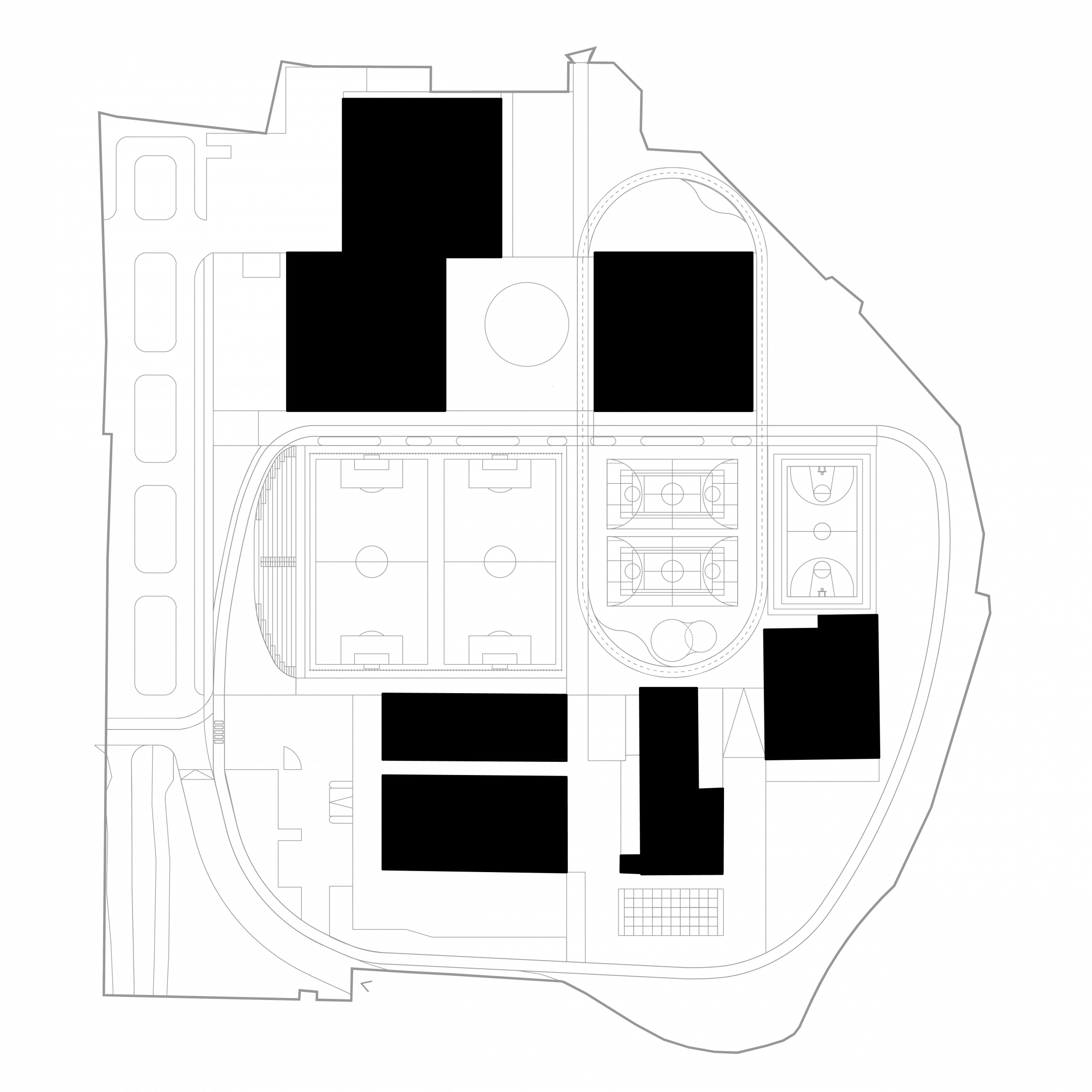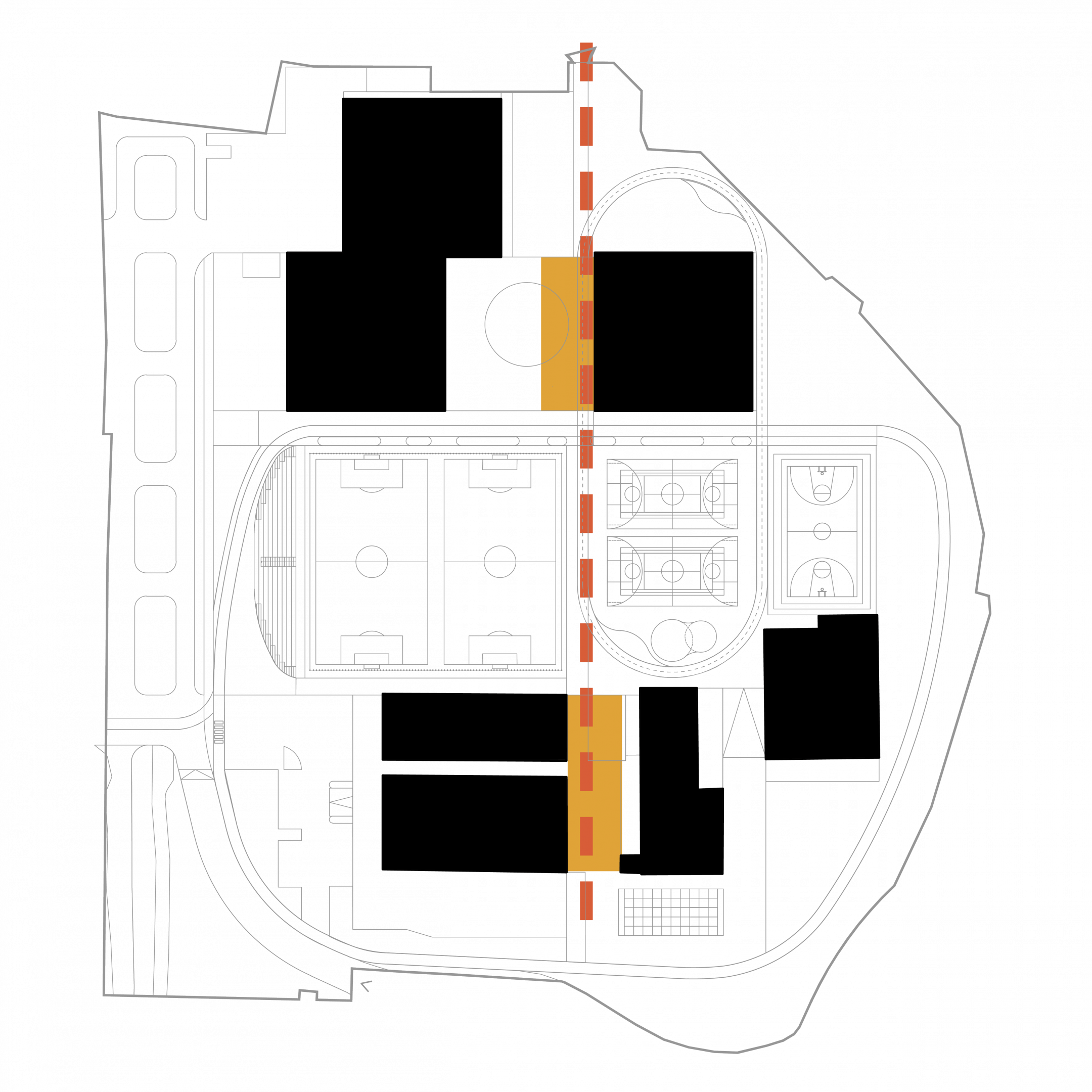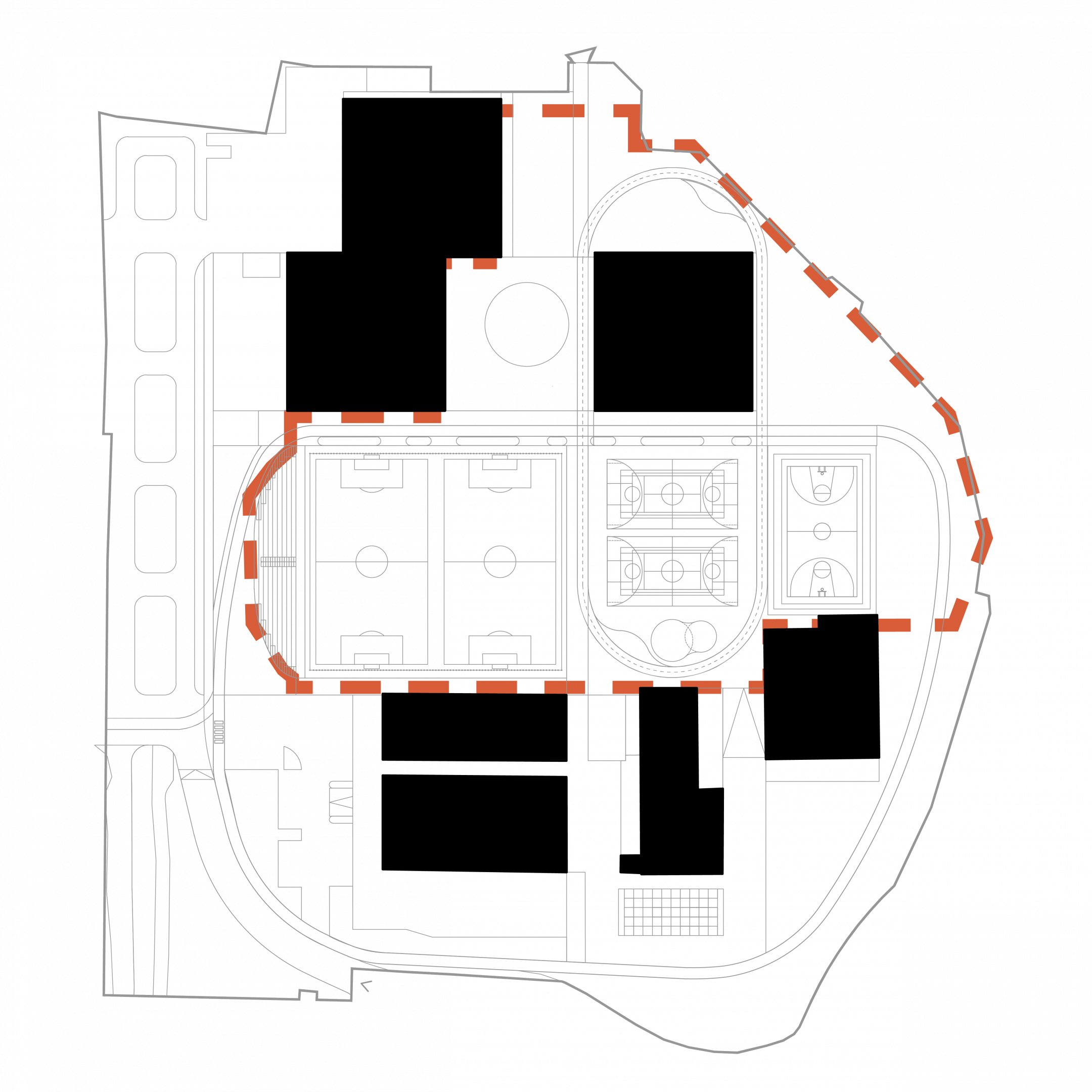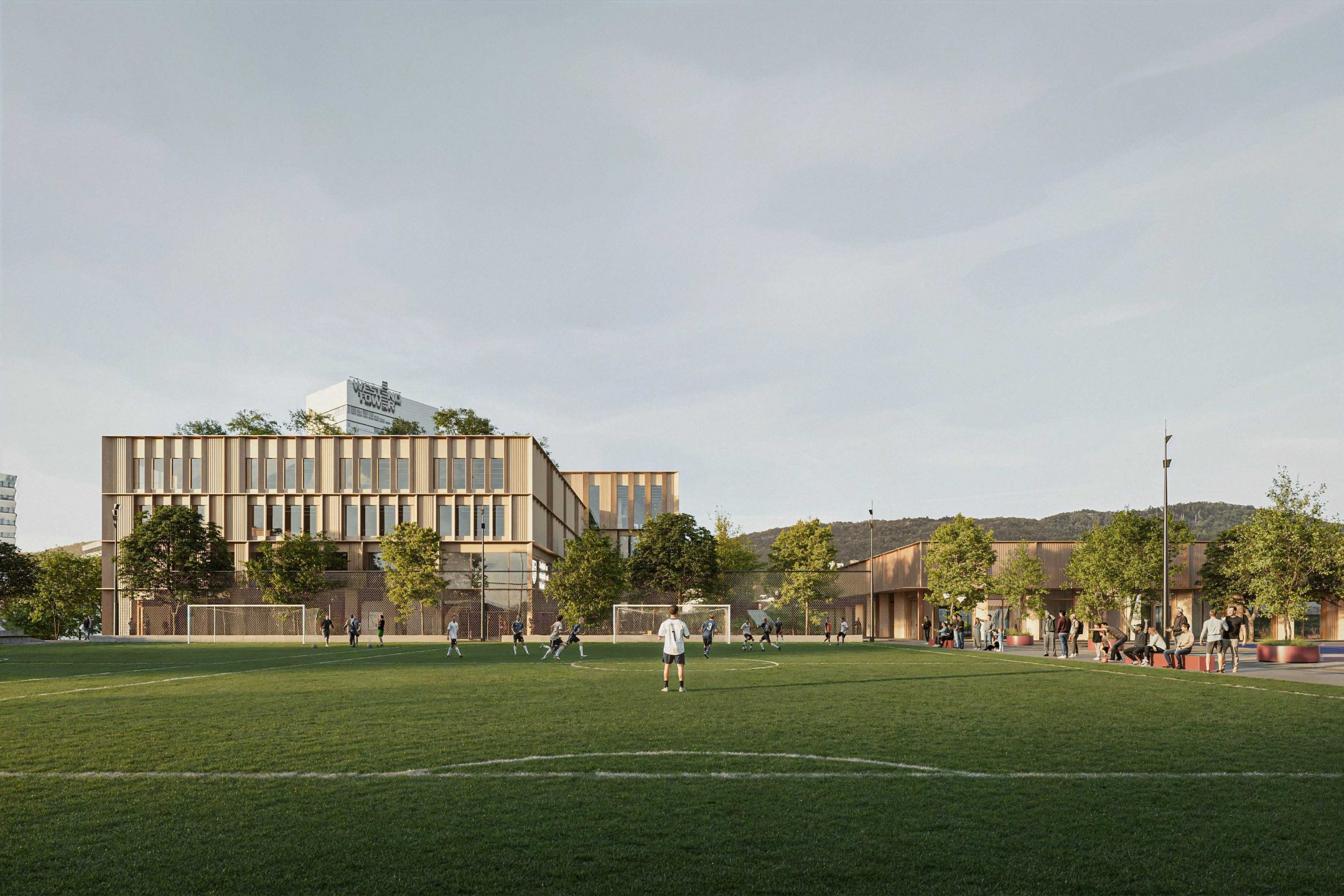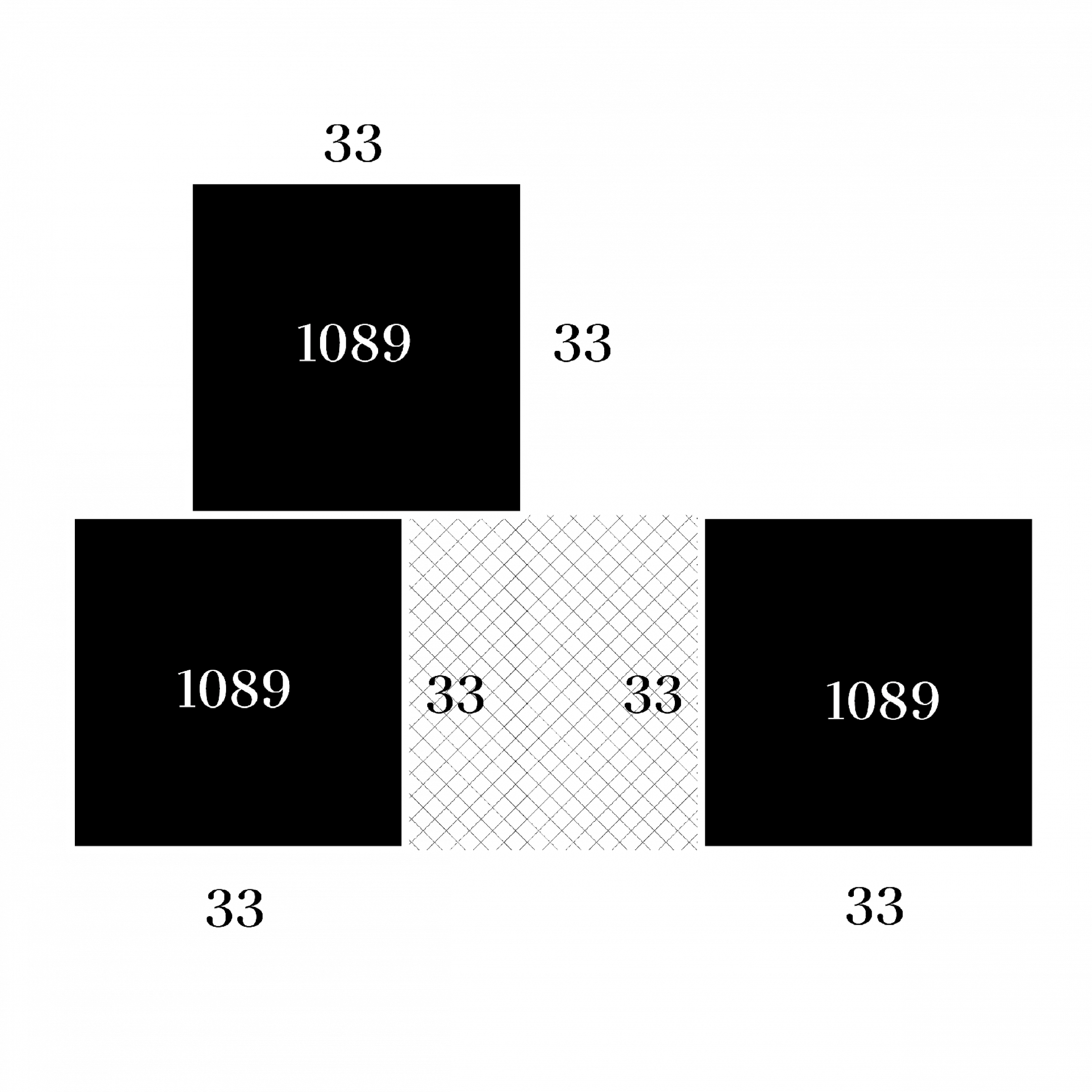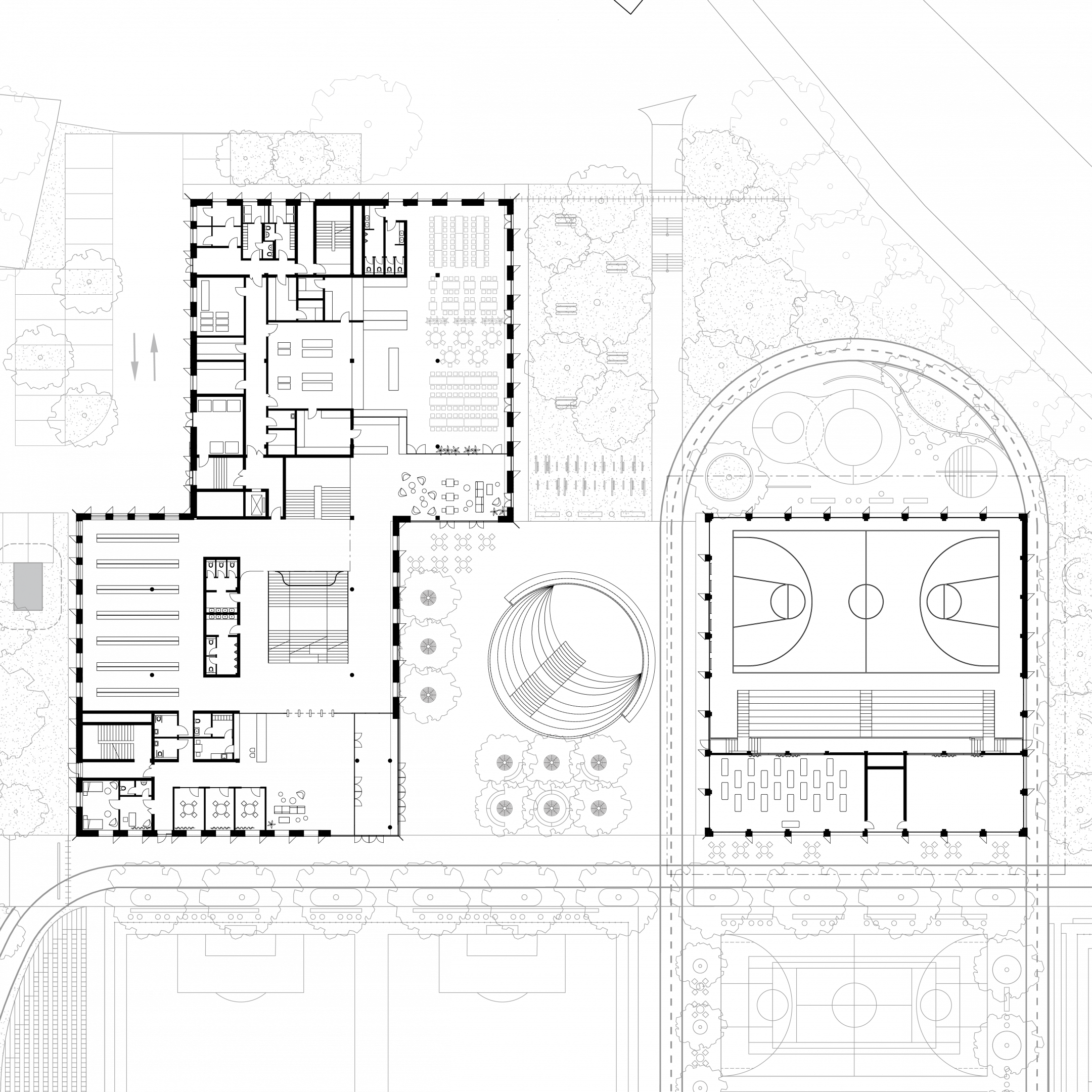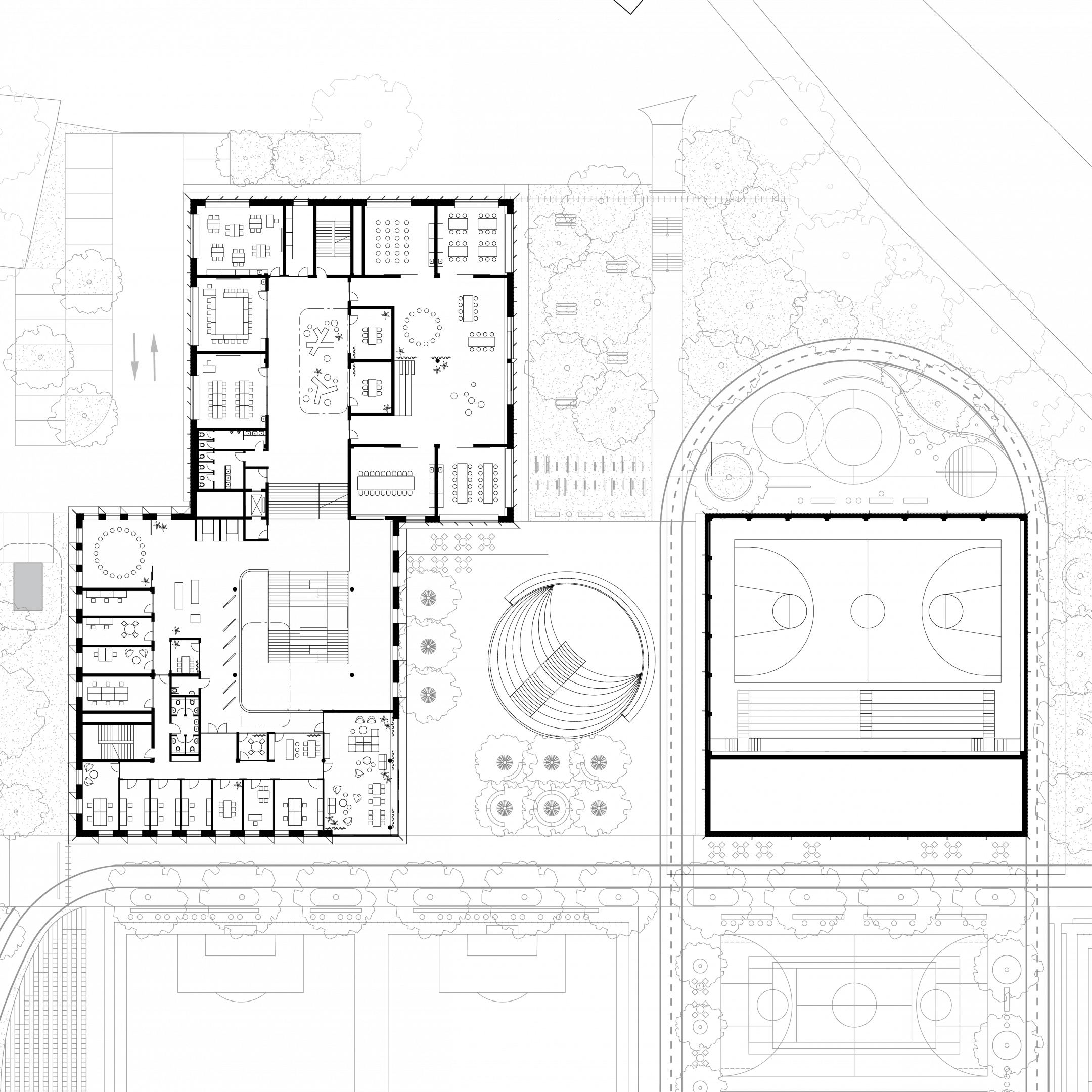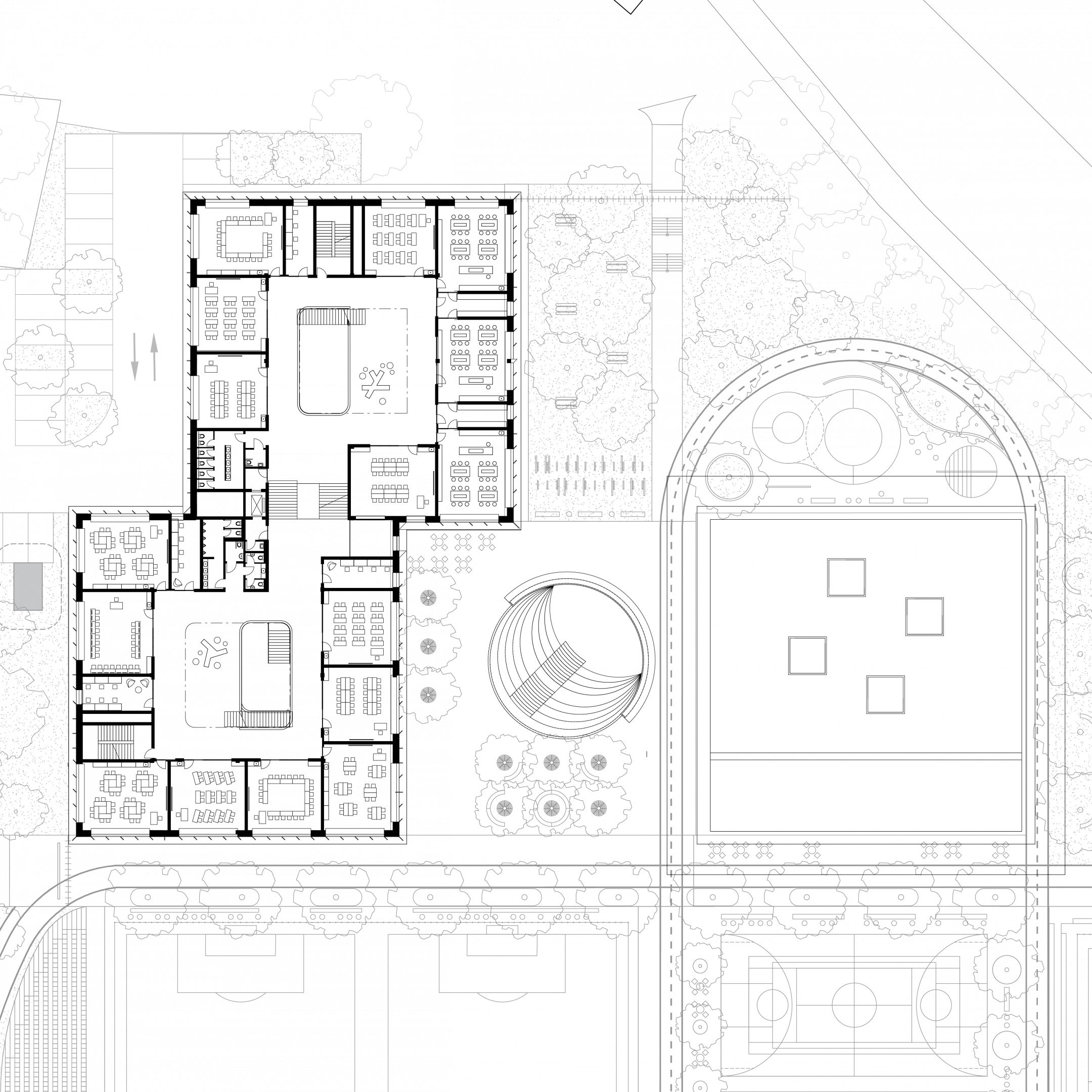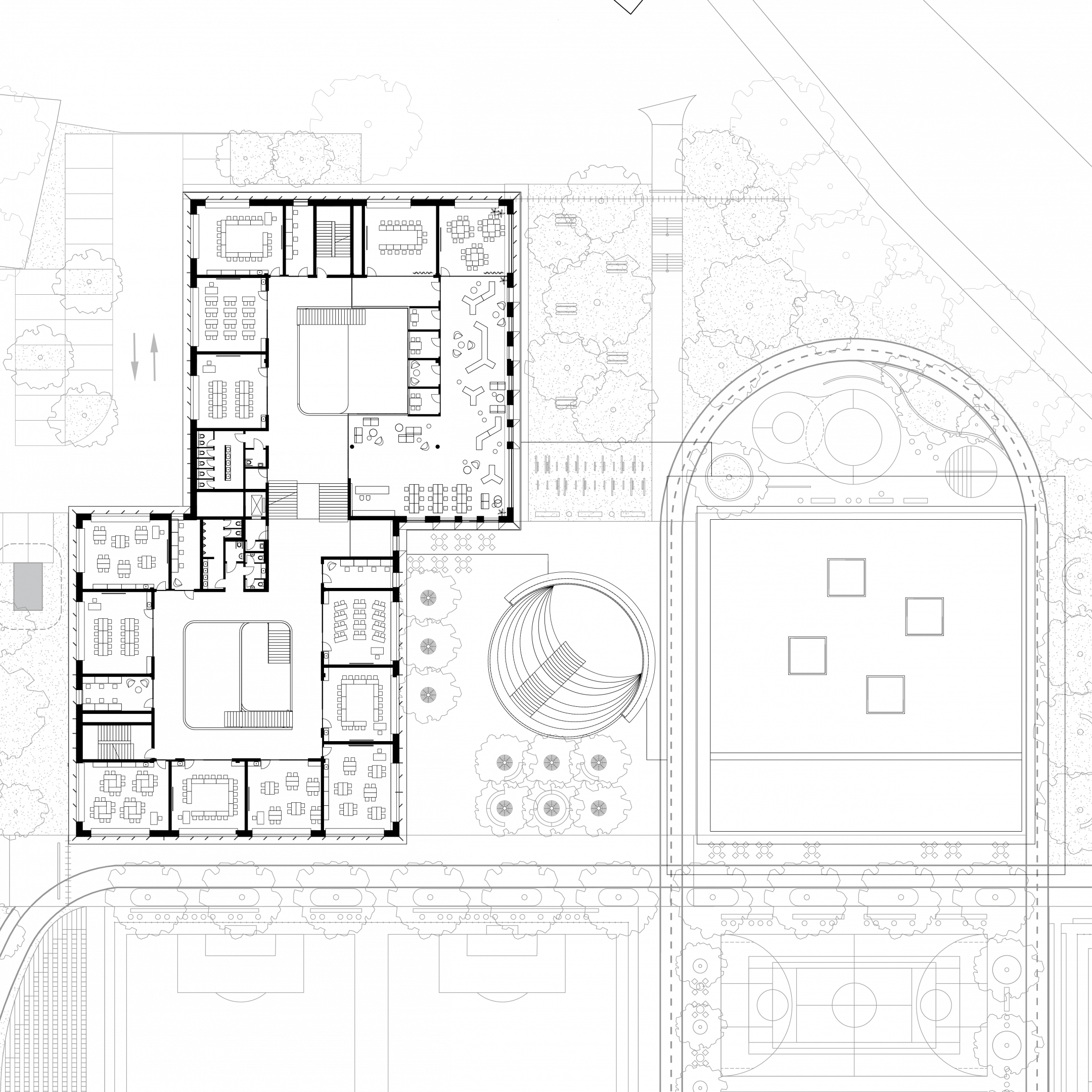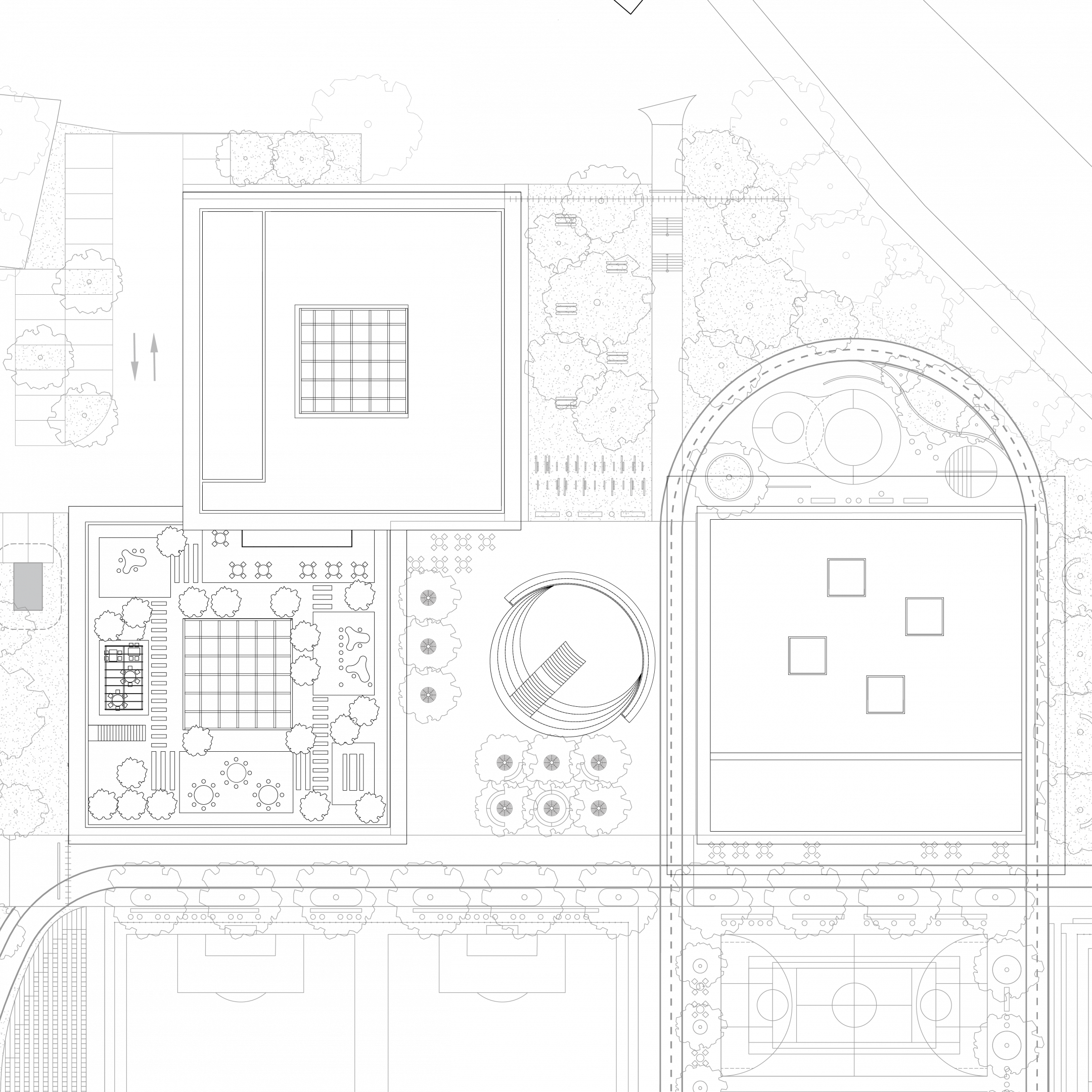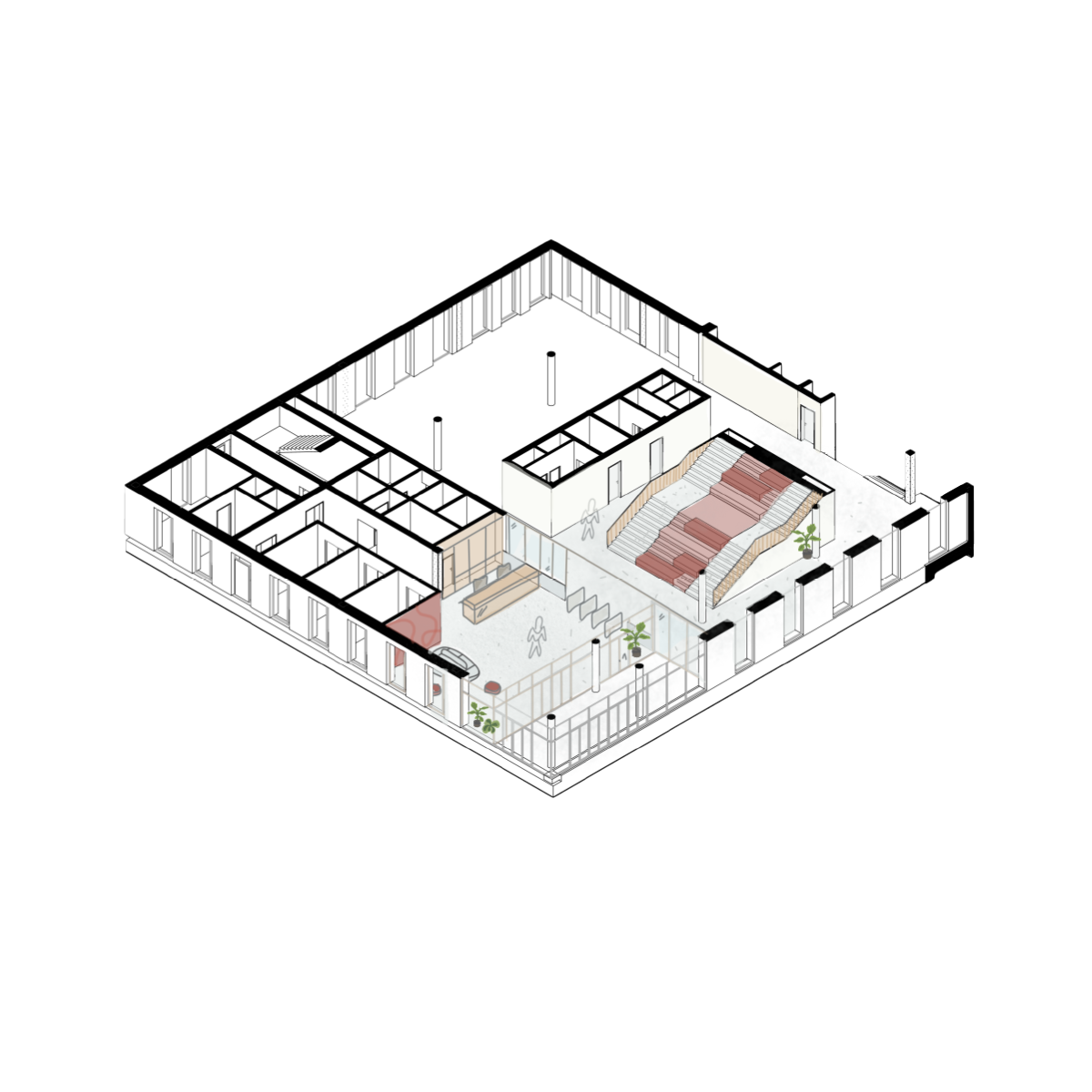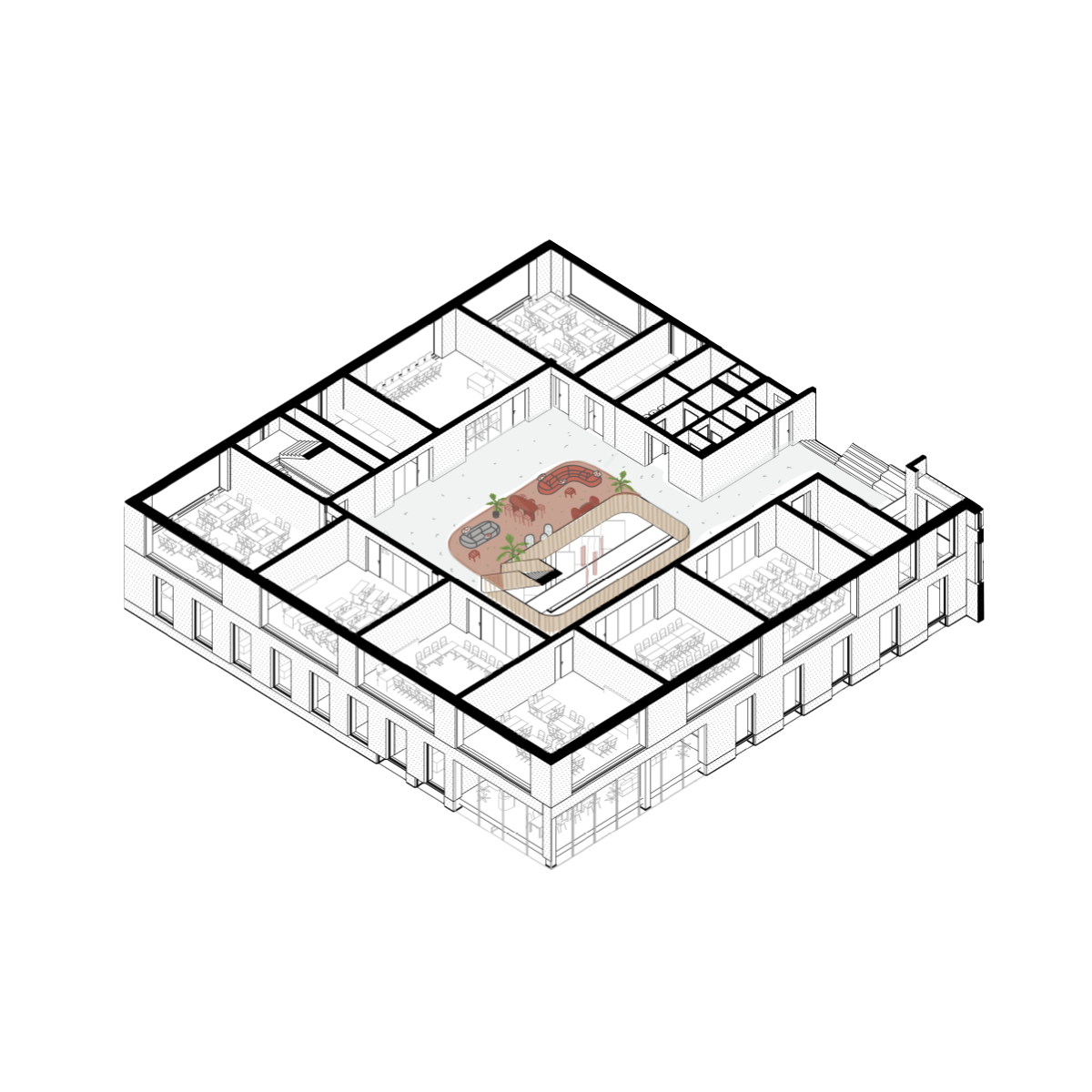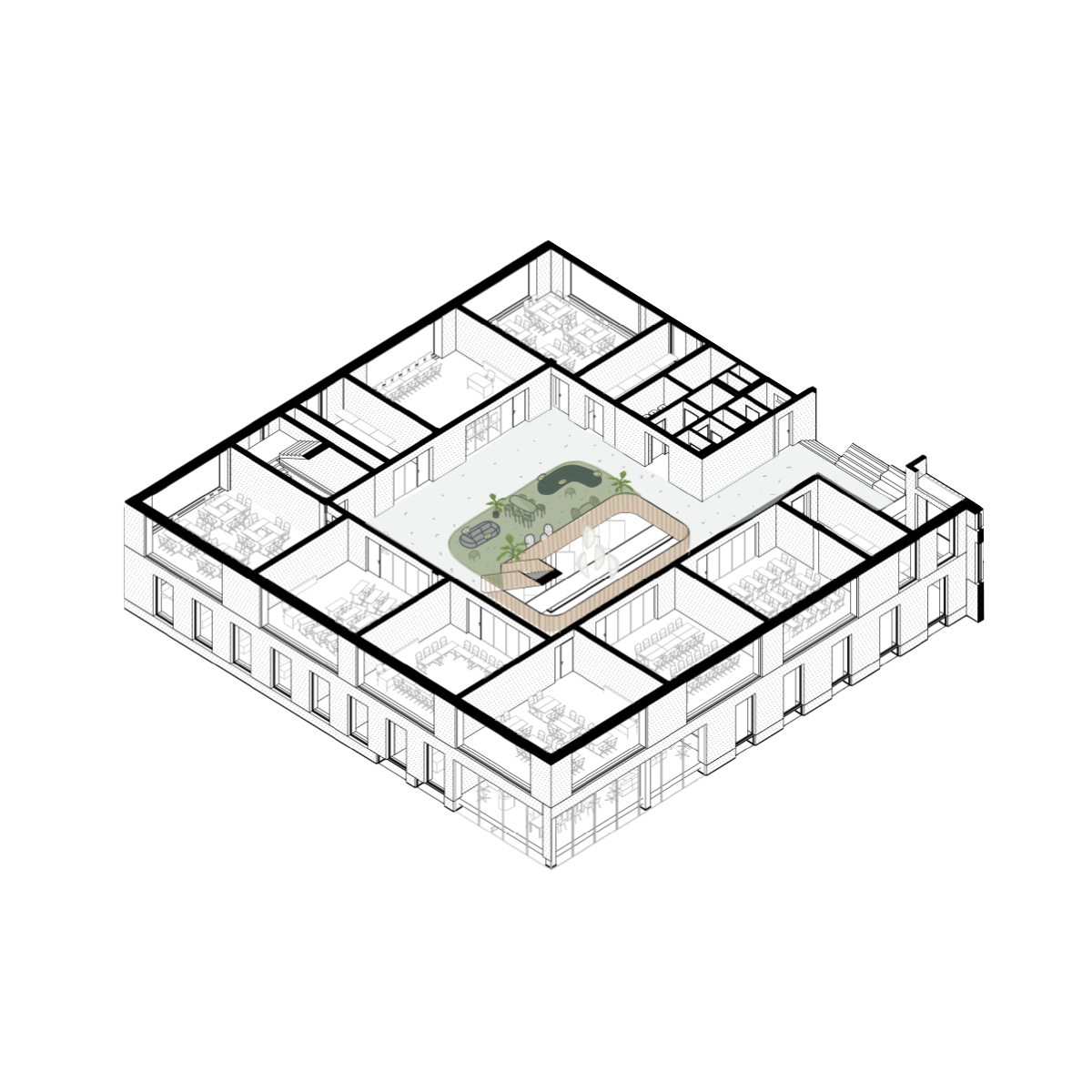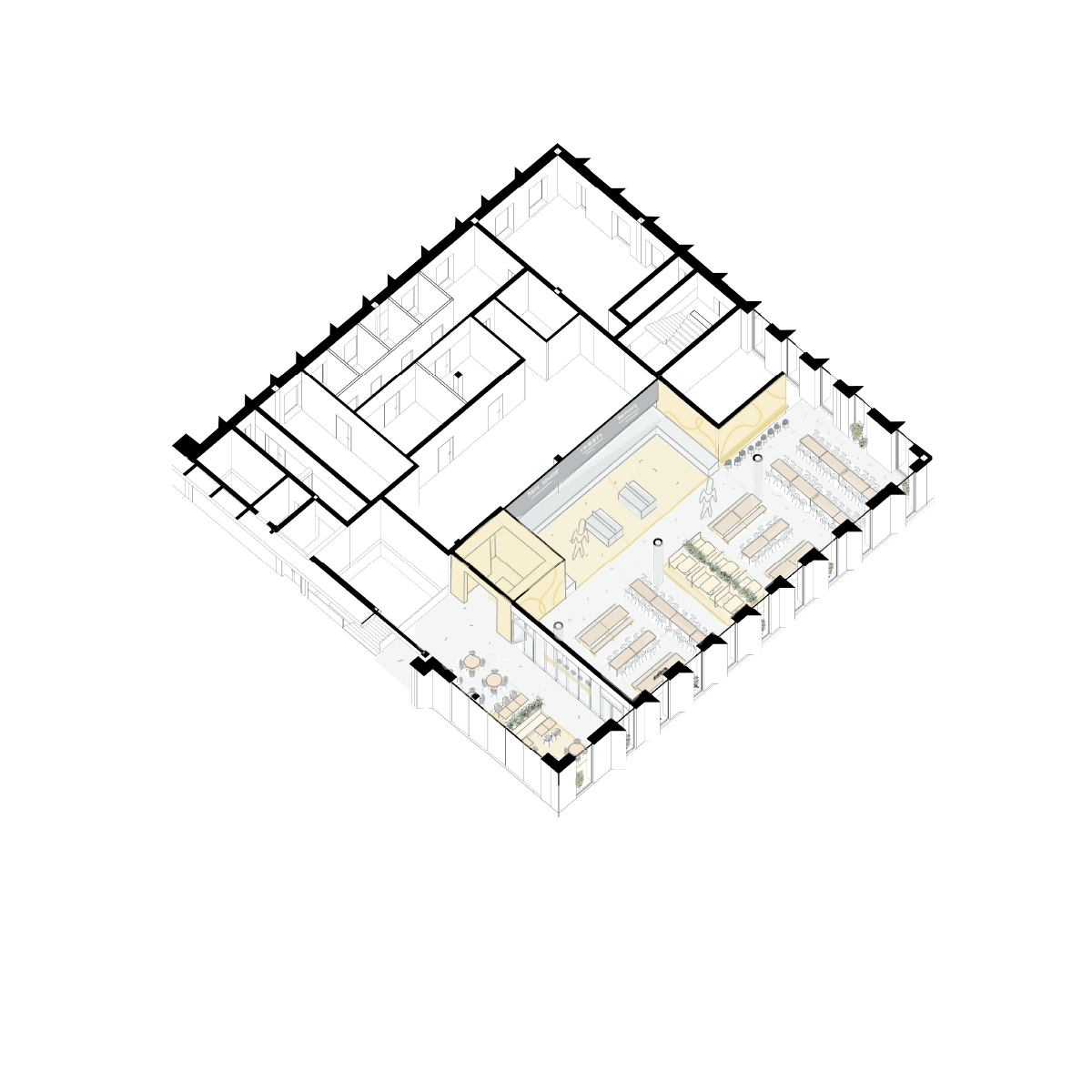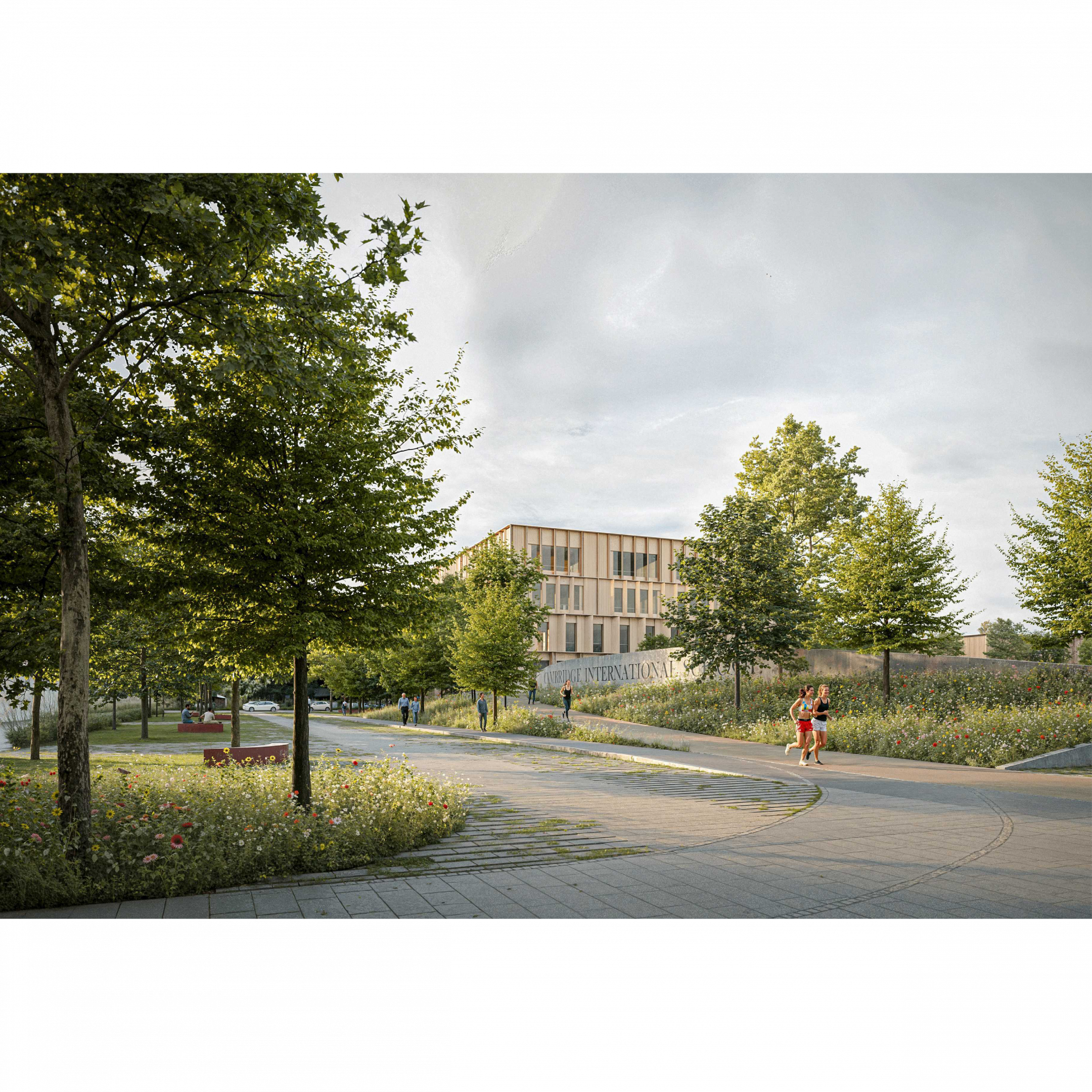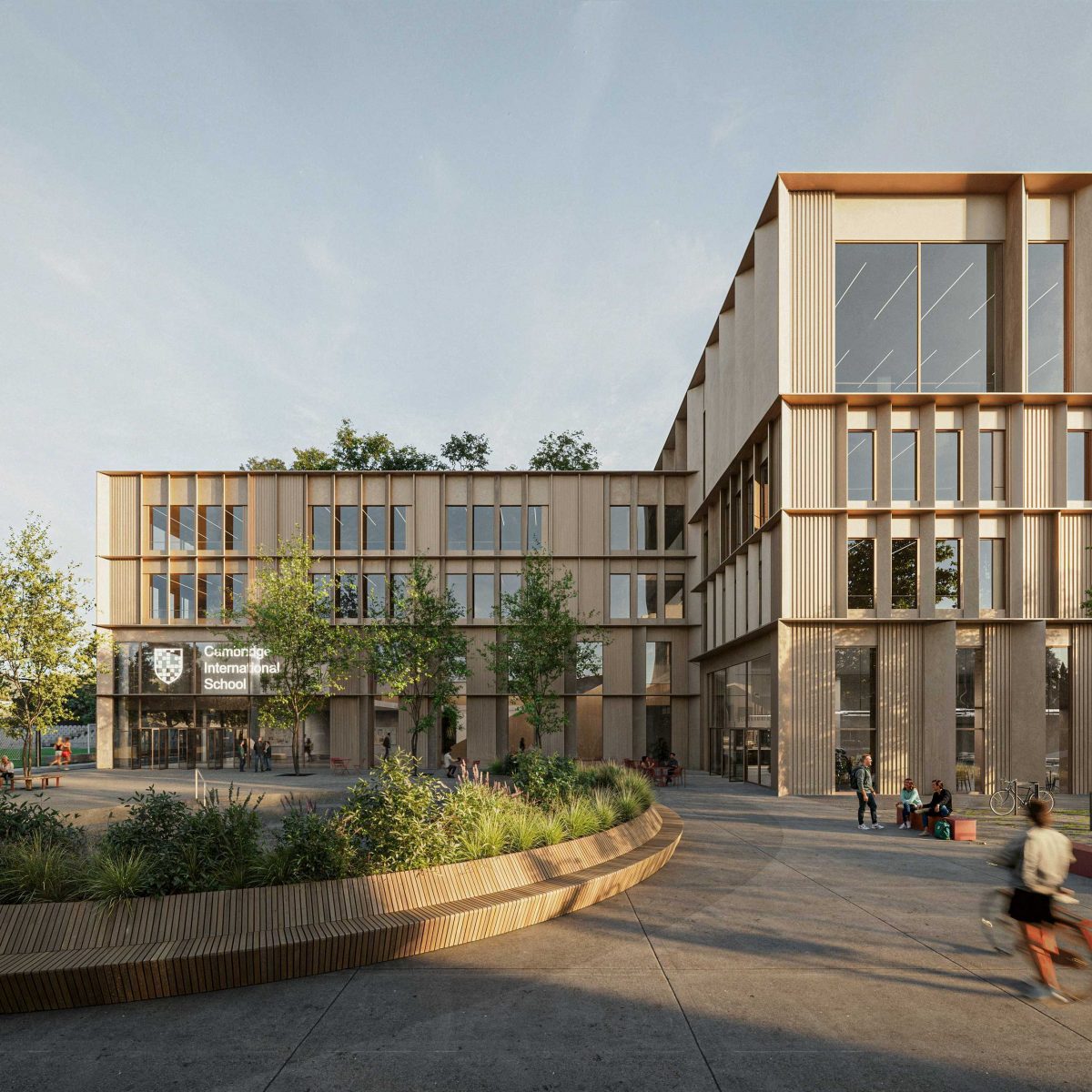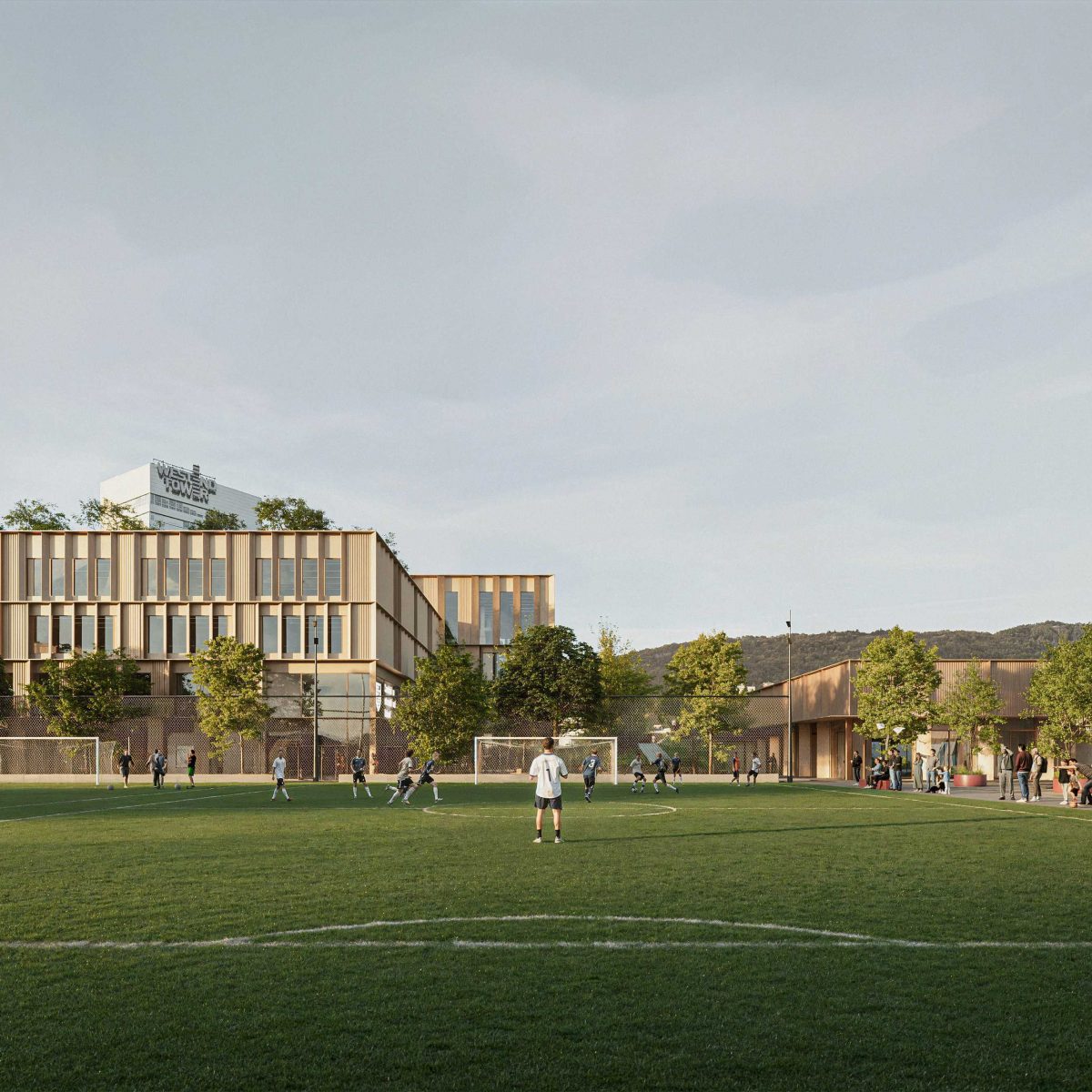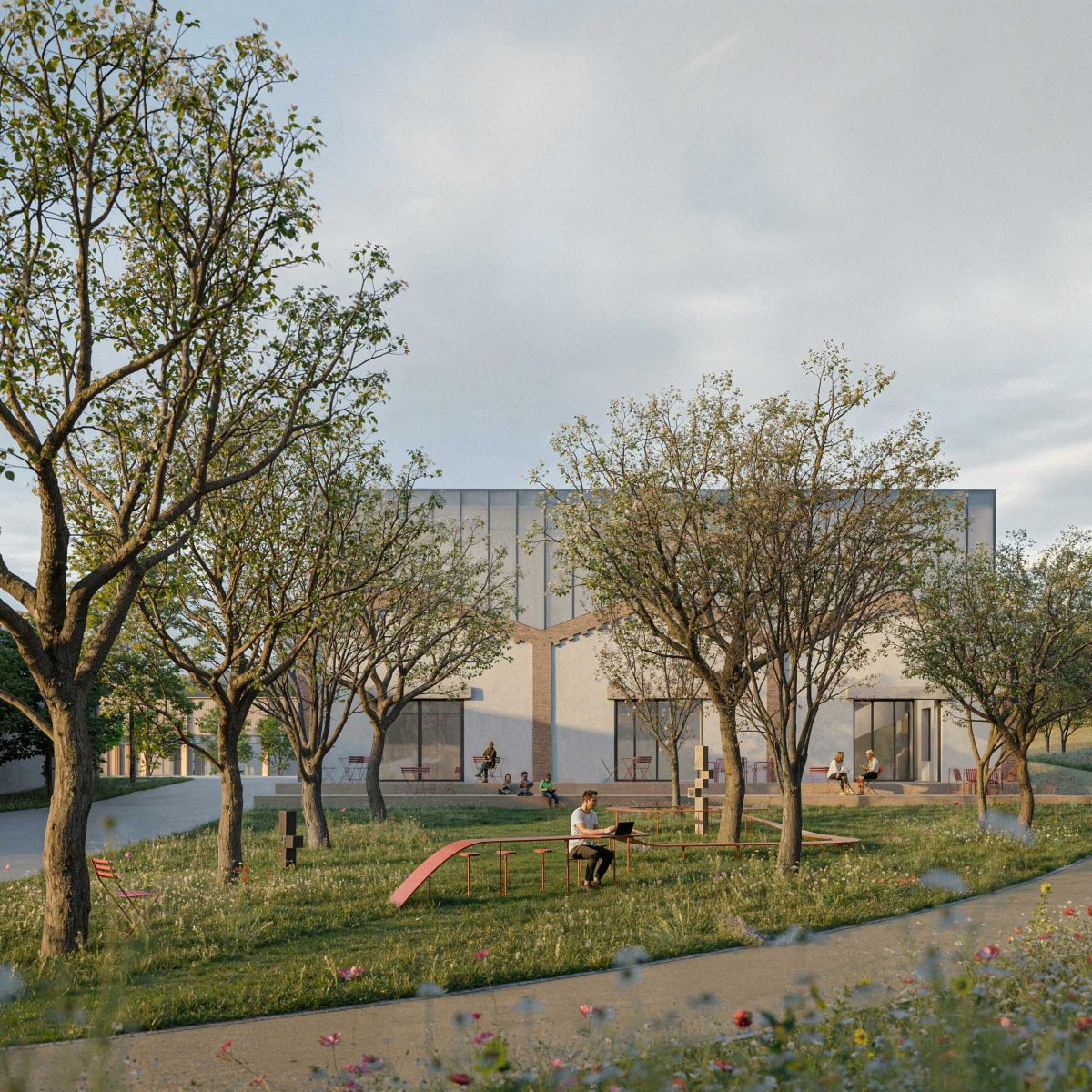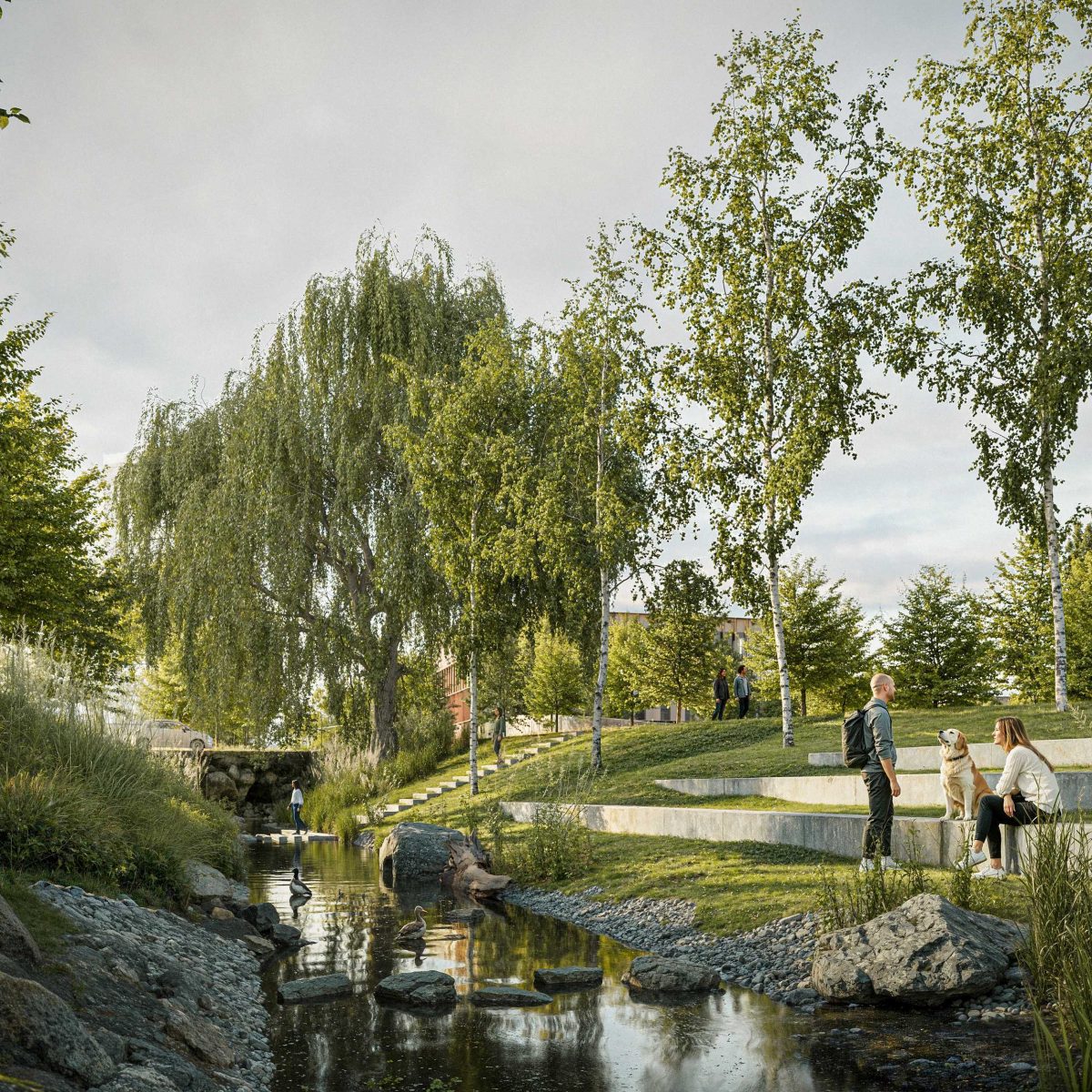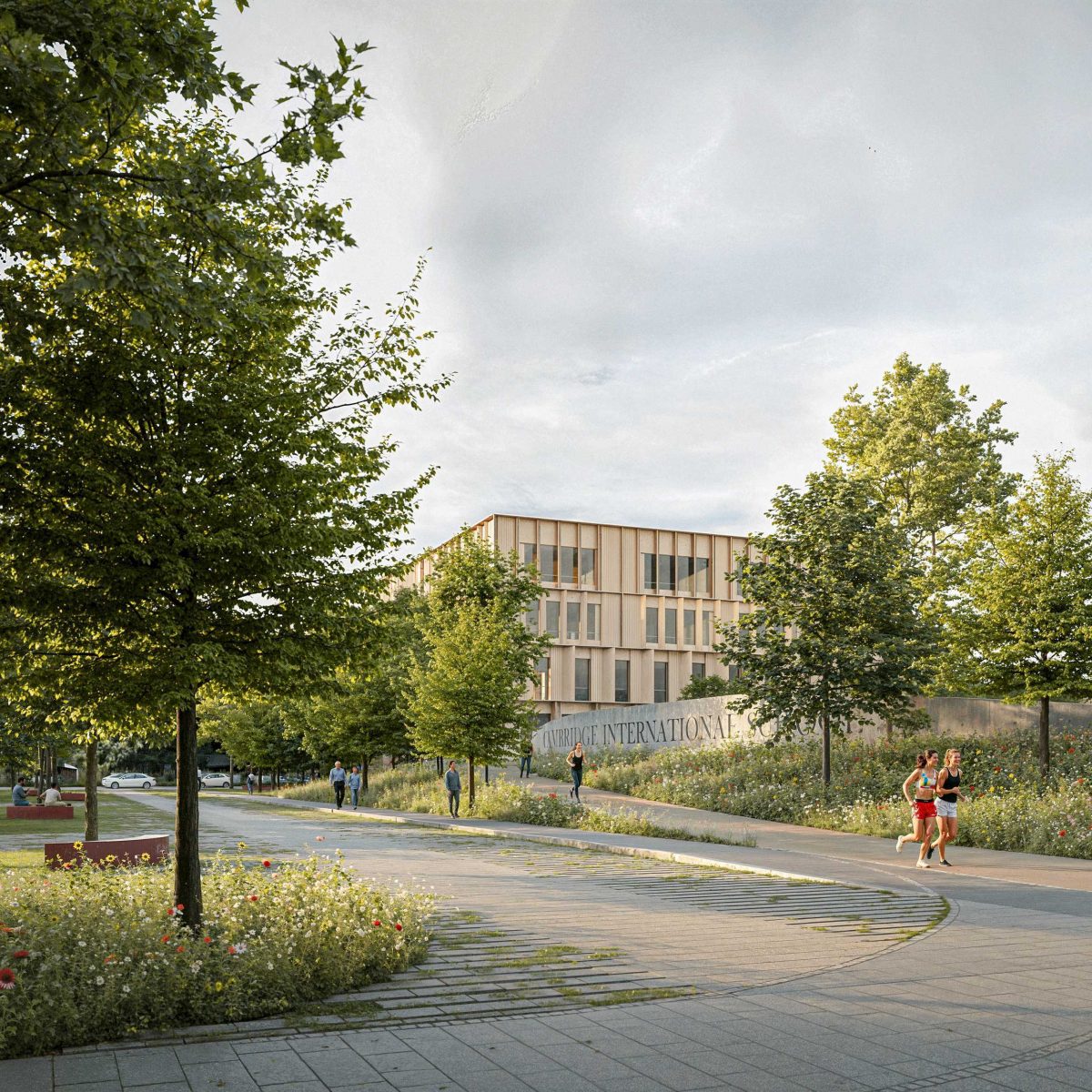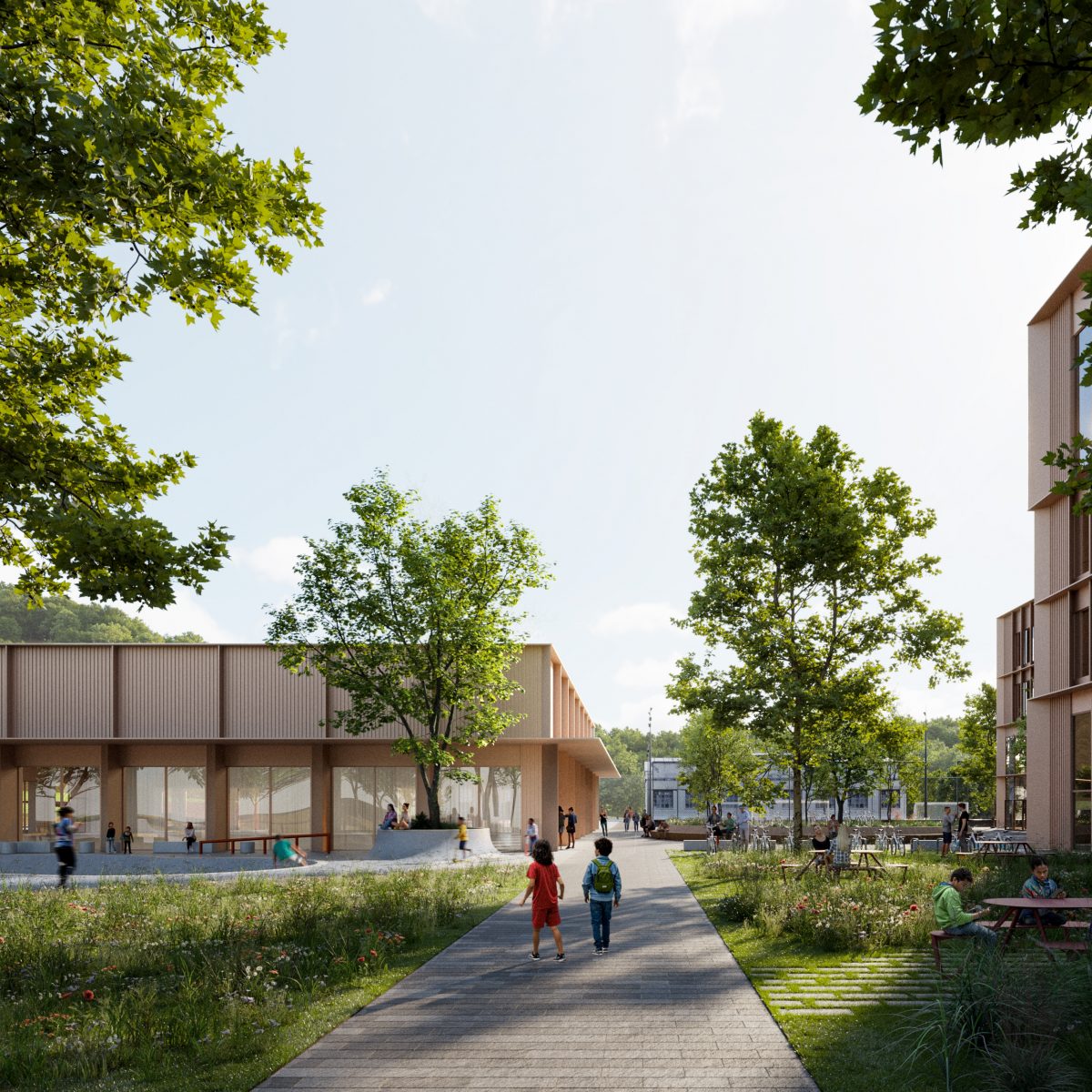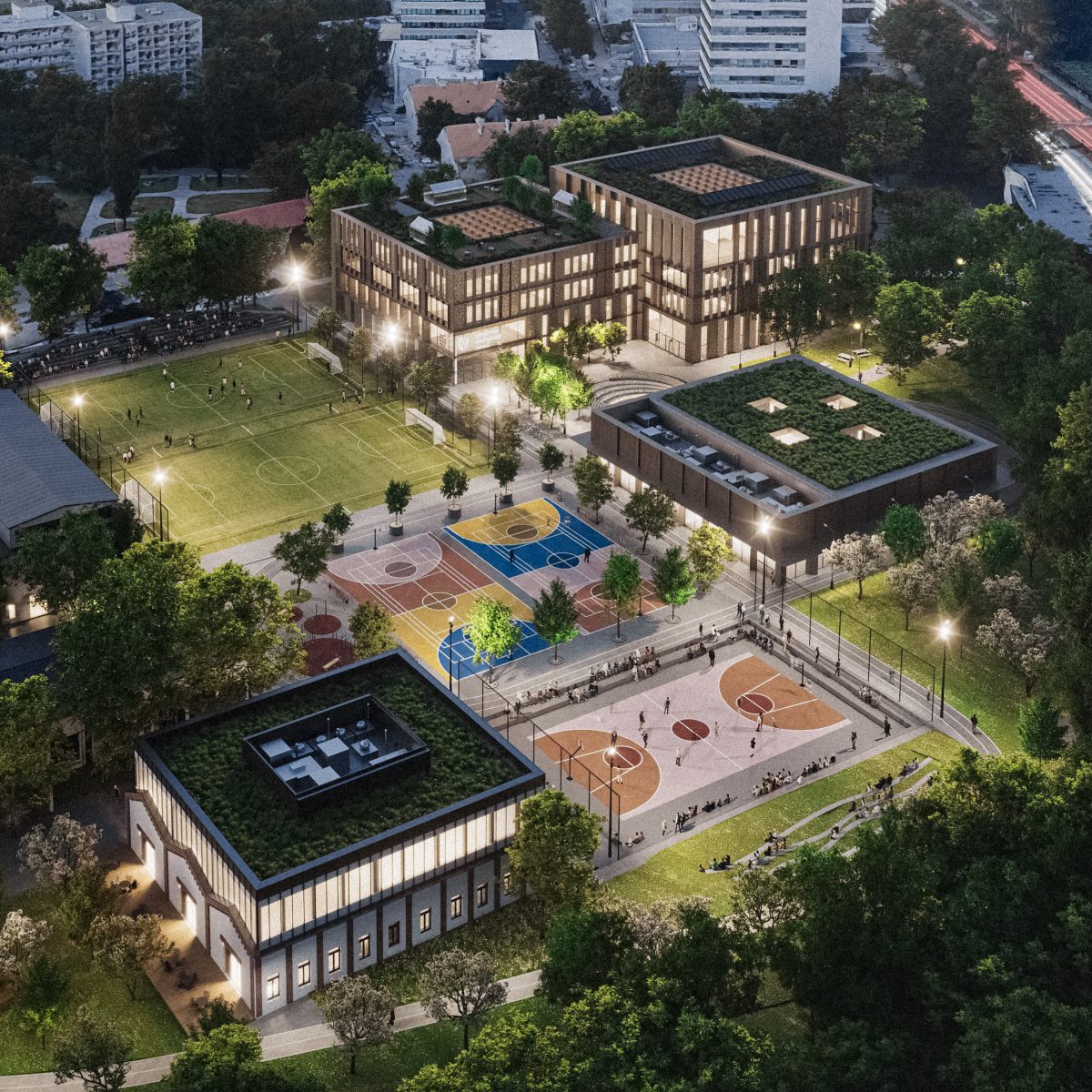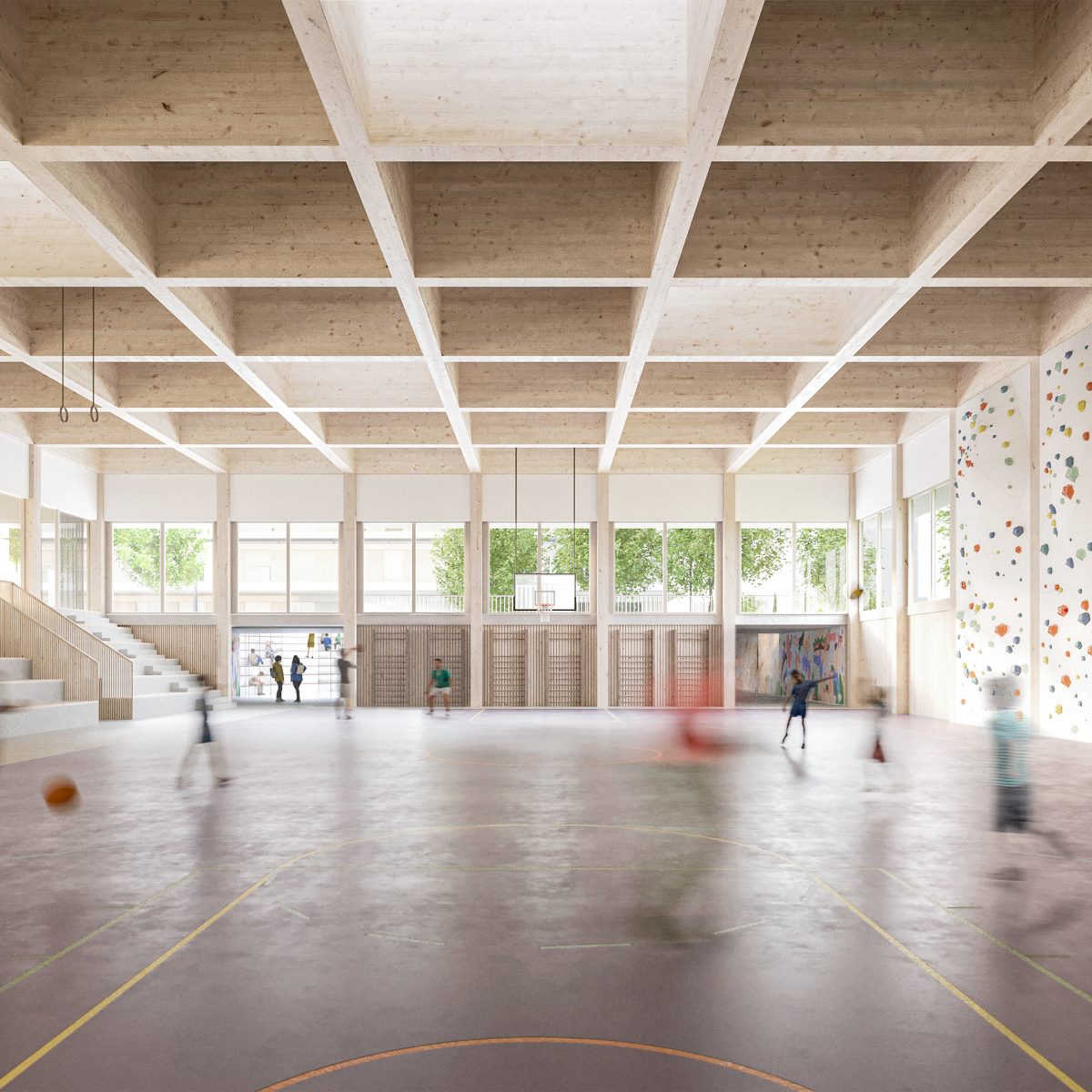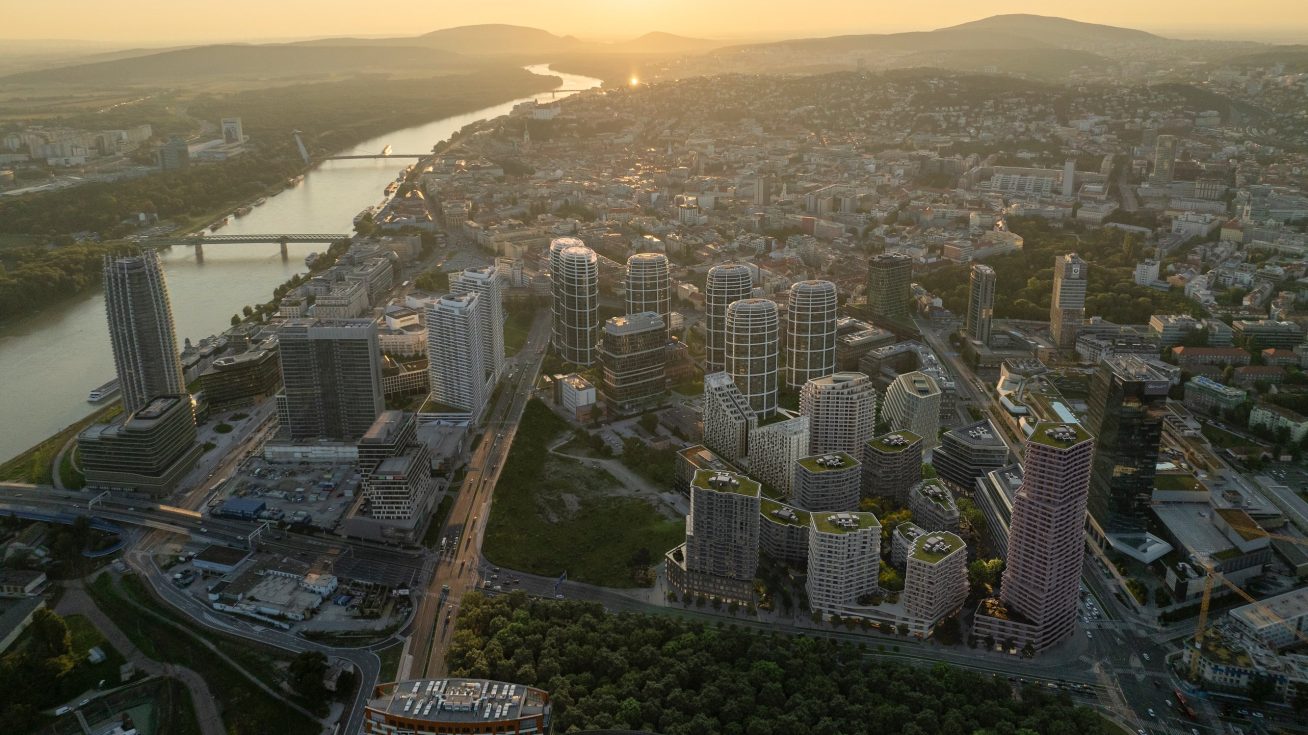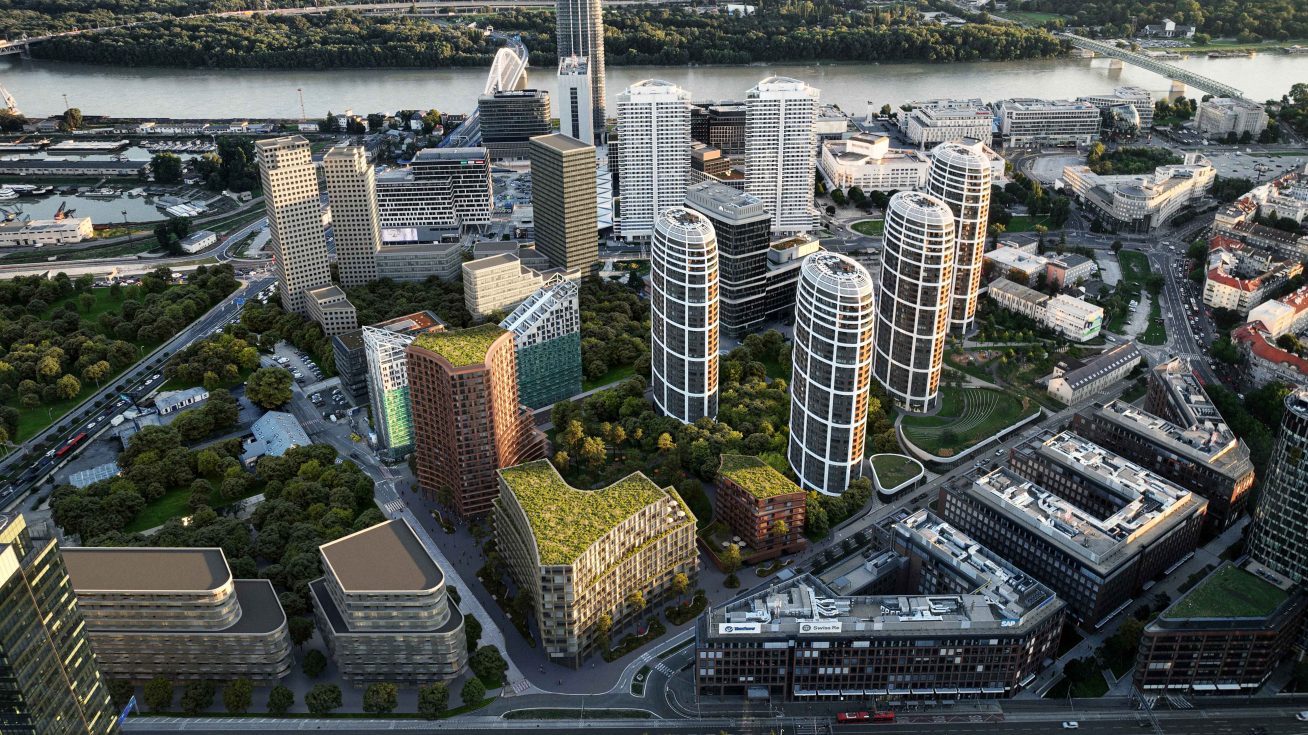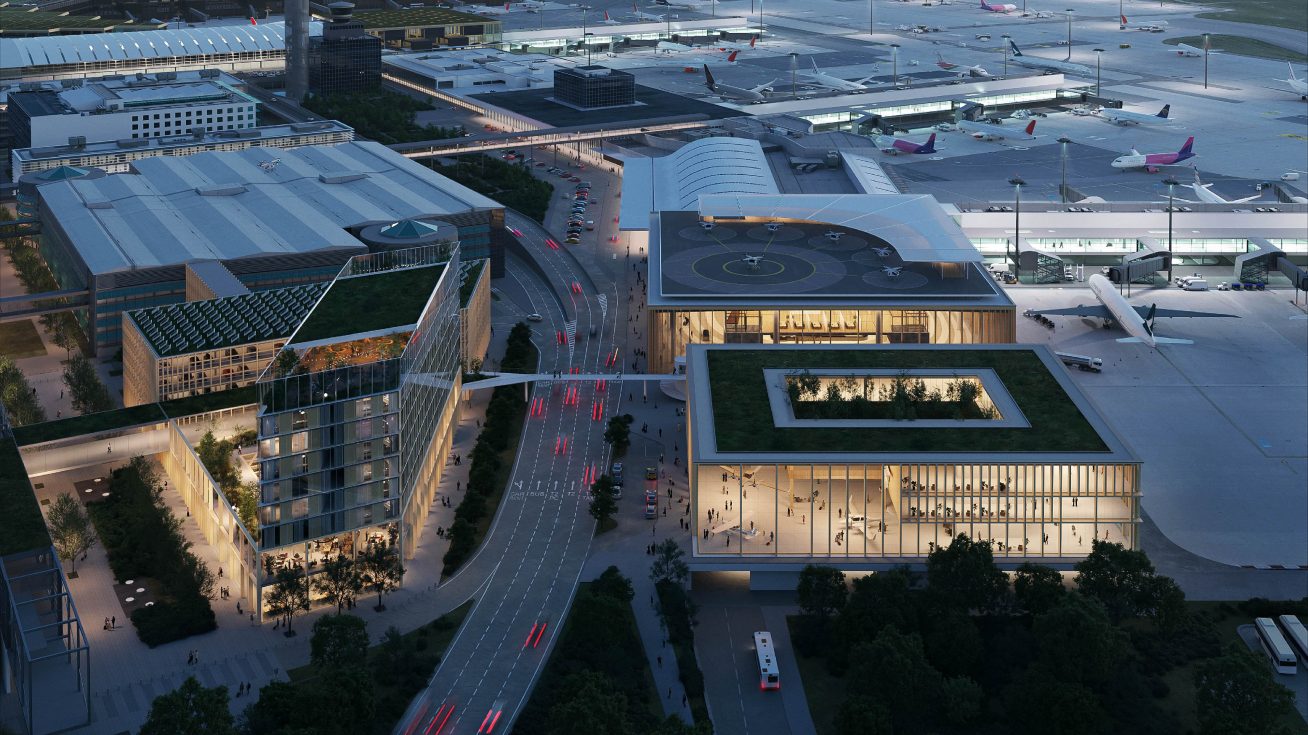About project
The proposal for the Cambridge International School draws inspiration from the rich historical and urban context of the Patrónka area and effectively combines modern technologies with sustainable architecture. The campus of the private secondary school is designed as a modern educational and social center for students and the general public. The area includes modern spaces designated for teaching, sports activities, and cultural events. A large part of the site consists of a multifunctional playground that will be regularly used by both the school and local communities, ensuring flexible use of the space for various activities. The design of the new school also includes the renovation of the historic printing house and its transformation into the creative part of the Arthouse campus.
-
Client
Patrónka s.r.o.
-
Year
2024
-
Location
Bratislava, Slovakia
-
Size
9 940 m2
-
Architecture
Ján Antal
Martin Křivánek
Oksana Džabarjan
Robin Muller
Monika Škardová -
Landscape
Kristýna Stará
Libuša Rybanská -
Interior
Martin Stára
Nikol Zelmanová
Aneta Rendlová -
Visualization
Ján Martin Púčík
Peter Horváth
URBANISM
The project comes to the area of a historic industrial site with the aim of overall reclamation, ensuring permeability, and making it accessible to the public. The school features an open and accessible environment that supports interaction with neighboring communities. The surroundings promote walking and cycling, creating a safe and attractive space for both students and local residents.
The proposed school campus includes various functions that go beyond the traditional educational environment. In addition to classrooms and laboratories, spaces for creative activities and diverse sports facilities are available.
A main axis runs through the entire area, connecting two main public spaces of the campus with the surrounding environment. The urban structure allows for simple closure of the school grounds during class hours and, conversely, complete opening to the public after school hours.
LANDSCAPE
The design of the school campus reflects the effort to create a functional and aesthetically pleasing space that will serve not only students and teachers but also the broader community as a place for gathering, relaxation, and active engagement with nature. The central axis divides the space into three main parts: an entrance/reception area with a square surrounded by school buildings, a landscaped park area, and a section with sports facilities.
The surroundings of the school are enhanced by a green ring composed of mature trees, shrub undergrowth, and covered with extensive meadow mixtures. The western side along the Vydrica River offers resting spots where visitors can get close to the water’s surface, while the northern part continues with a linear park. The eastern section of the campus is naturally sheltered by sloping terrain covered in greenery, which isolates the school space from the urban hustle and bustle.
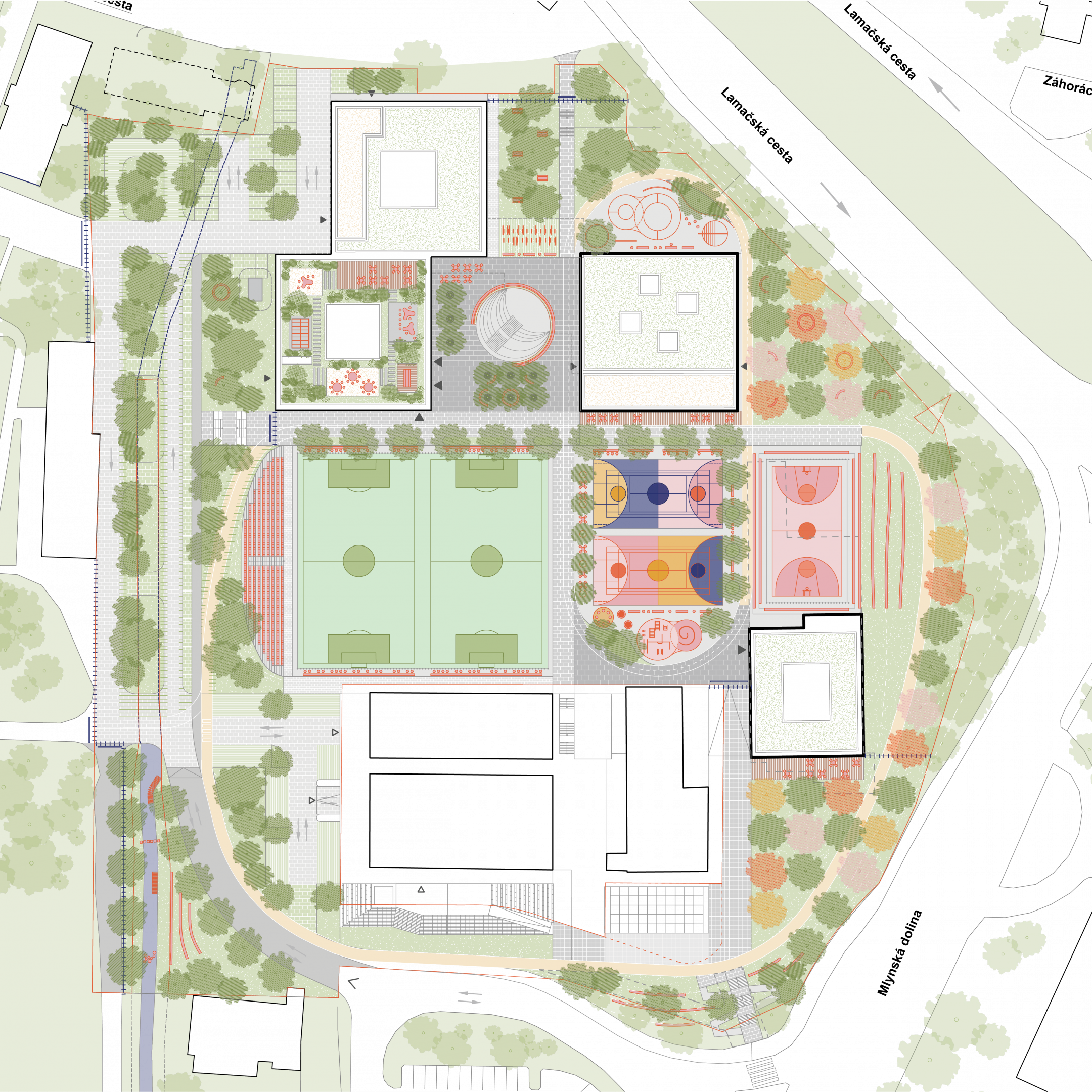
ARCHITECTURE
The designed as a composition of three volumes, each measuring 33 × 33 m. Two connected square shapes form the main building. They are offset from each other both in plan dimensions and in height, concealing an internal atrium.
The third cube, with the same footprint dimensions, represents the partially submerged mass of the gym. By repeating the same dimensions in the composition of volumes, an open space for the school courtyard with an amphitheater is created.
Additionally, the project includes the renovation of the former factory hall into a creative facility called ArtHouse, which will serve students in artistic fields as well as for after-school clubs and various community activities.
Upon entering the building, visitors are greeted by the first atrium featuring a dominant “grand theatre” staircase that provides access to the central staircase and also offers a space for relaxation during breaks. The ground floor also houses a cafeteria. The second floor is largely dedicated to the administrative area, which also serves as a representative space for hosting events in the atrium area.
Within the interconnected concept of the building, individual classrooms are designed, segregated by different focuses, yet offering ample space for flexible use. The dominant feature of the fourth floor is the library, which consists of an integrated space where various functions are organized according to zones. The conceptual flow line through the building ends at the rooftop terrace, which is connected to the library.
Considering the context of the new building and the area’s history, we propose aluminum sheet as the main material for the facade, which divides the facade into distinct floors while aluminum slats provide passive protection for the interior spaces from sunlight. The roofs of the buildings are green, covered with vegetation.
INTERIOR
The interior of the school is carefully designed to stimulate curiosity and open doors to new ideas. The environment creates specific moods that enhance motivation and a desire for knowledge. The “patchwork” concept effectively integrates a wide range of colors, textures, and materials, creating a dynamic and inspiring educational environment. Each space is designed with consideration for specific educational disciplines.
The design of the classroom interior, in neutral tones of white, beige, and gray, focuses on creating a pleasant and functional space that supports concentration. Community spaces add specific color shades to the neutral palette with the aim of creating a welcoming and creative environment for studying, social activities, and relaxation.
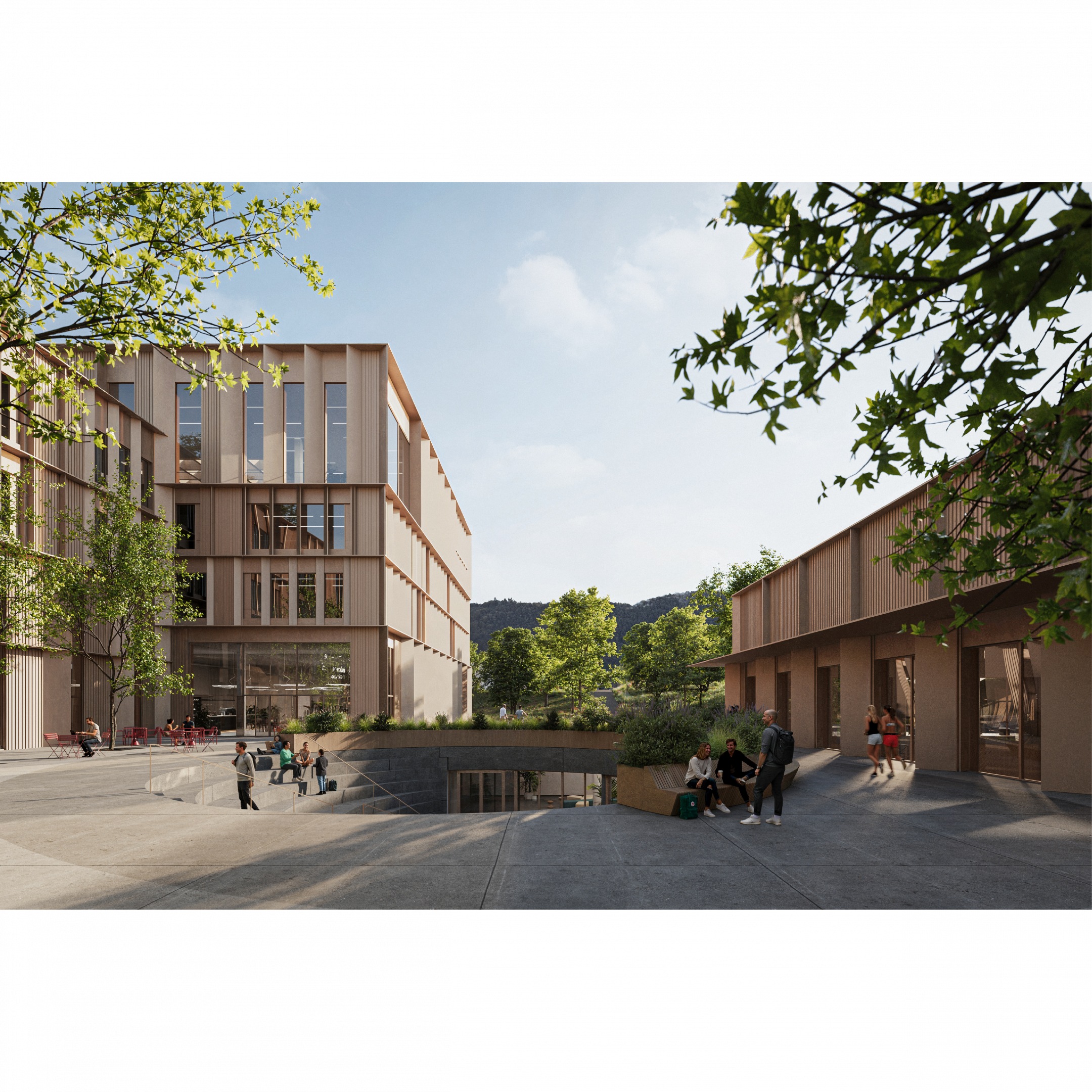
More projects
Project information
-
Client
Prague Airport
-
Year
2023
-
Location
Prague 6, Czech Republic
-
Size
64 600 m²
-
Visualisations
Monolot, Perspektiv
-
Authors
Perspektiv & Nordic Office of Architecture
